Cycling the Camino de Santiago
The Camino de Santiago is a network of pilgrimage trails that lead to Santiago de Compostela, where the remains of the apostle St. James are said to be buried. The routes have existed since the 10th century and connect numerous important cultural heritage sites. Most pilgrims, or peregrinos, take the trail on foot, and it is a popular backpacking route that attracts hundreds of thousands of travelers each year. We spent roughly two weeks cycling the Camino de Santiago from Pamplona to Santiago, visiting many medieval towns along the way.
Route
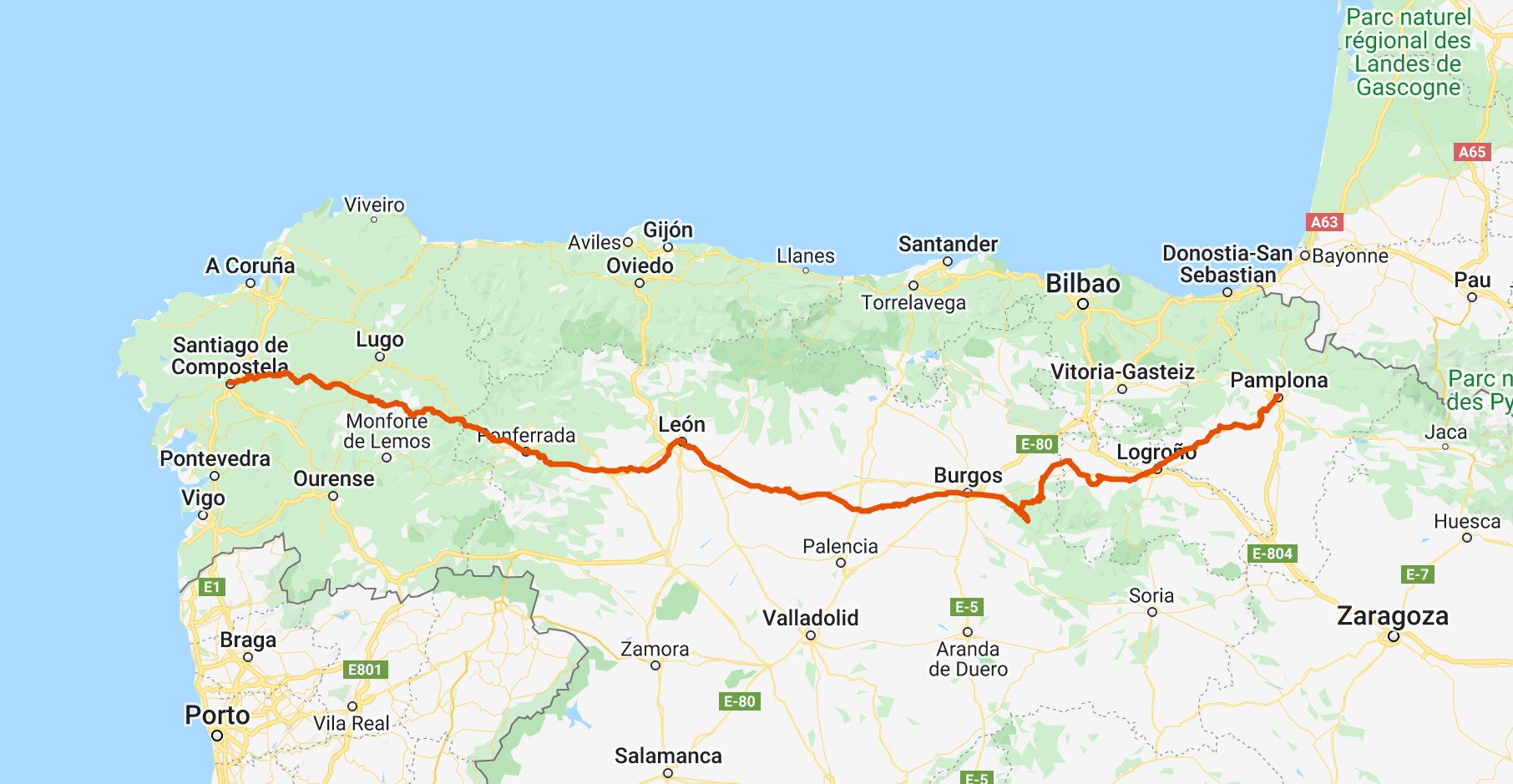
Download the GPX track for our ride on the Camino de Santiago. We cycled the actual Camino walking trail about half of the time and took the EuroVelo 1 when the trail was too muddy or steep for our touring bikes.
First Impressions
We left Pamplona and started out on the Camino hiking trail. Not 5 miles after leaving town Andrew got a rear flat tire. A rear flat is always a bummer because to take off the back tire on our bikes, you also have to remove the fender. We’ve gotten fairly fast at it though, so it wasn’t a major setback.
We encountered some issues right off the bat that would be characteristic of the trail in many sections – very steep grades that we weren’t able to ride on our heavy bikes. The EuroVelo 1 runs more or less parallel to the hiking trail, so when we got tired of pushing we would hop on the road route for awhile.
The Camino passes through countless beautiful medieval towns that were always fun to ride through. There were also lots of incredible bridges, many of which were pedestrian only and dated back to the origins of the Camino.
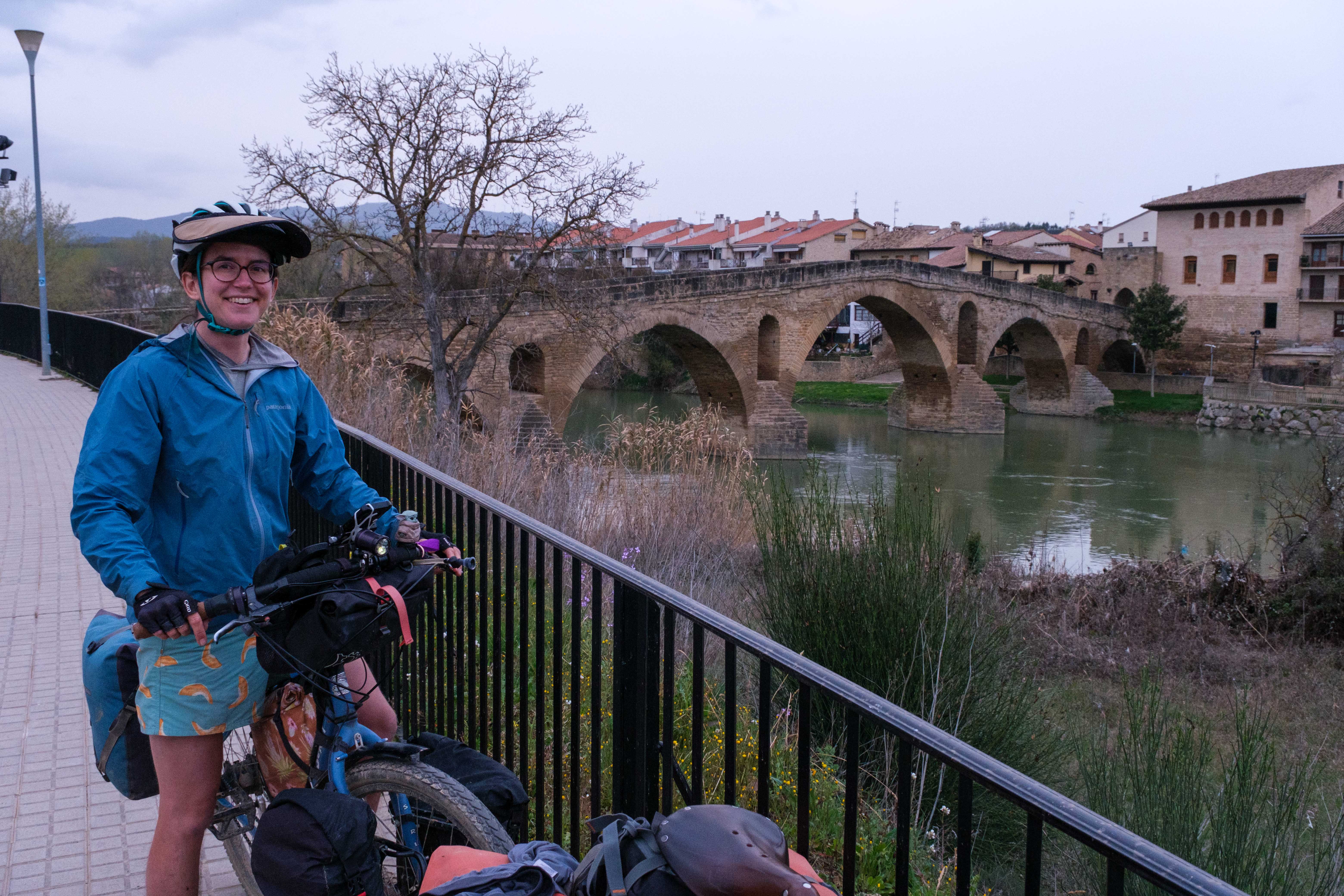
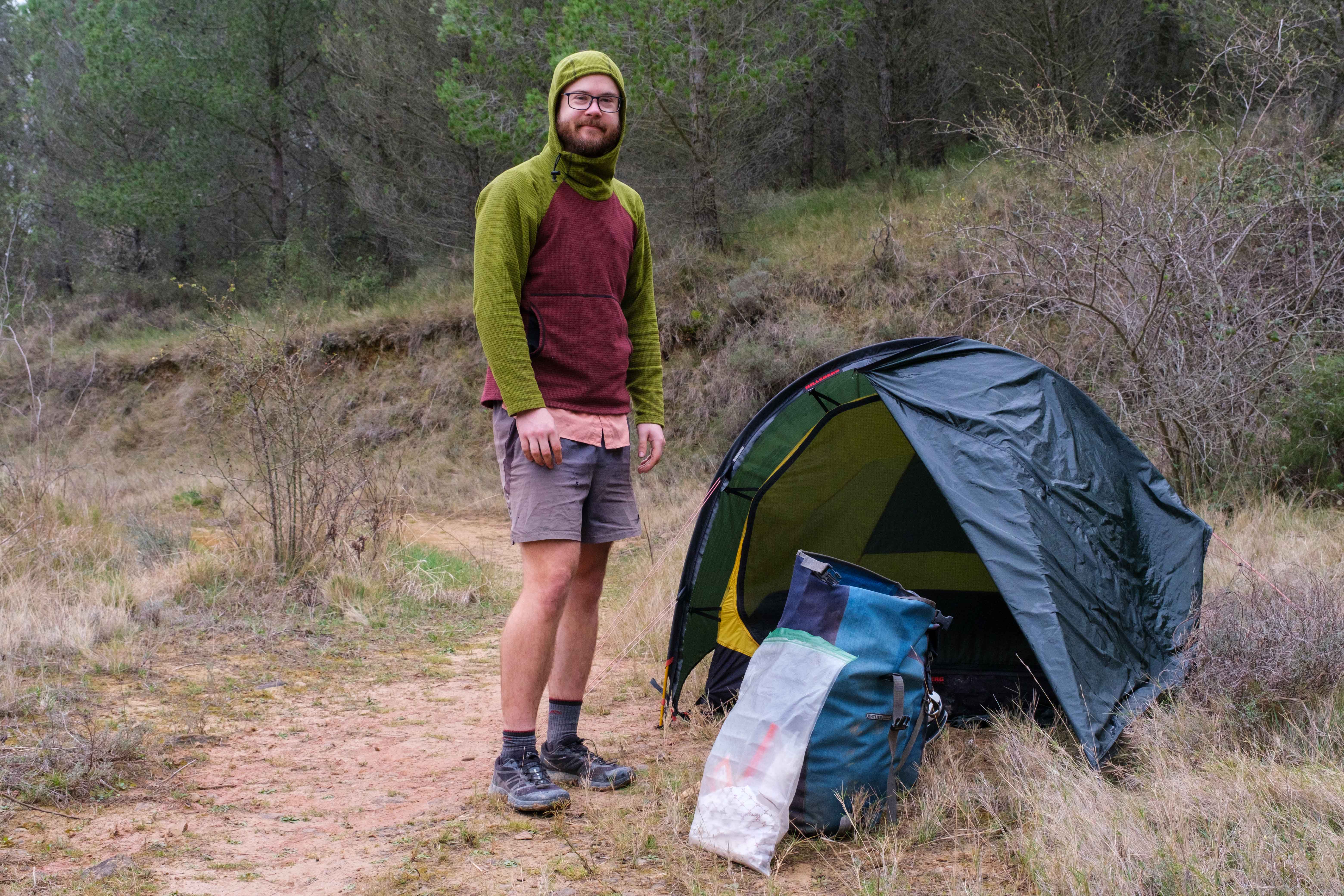
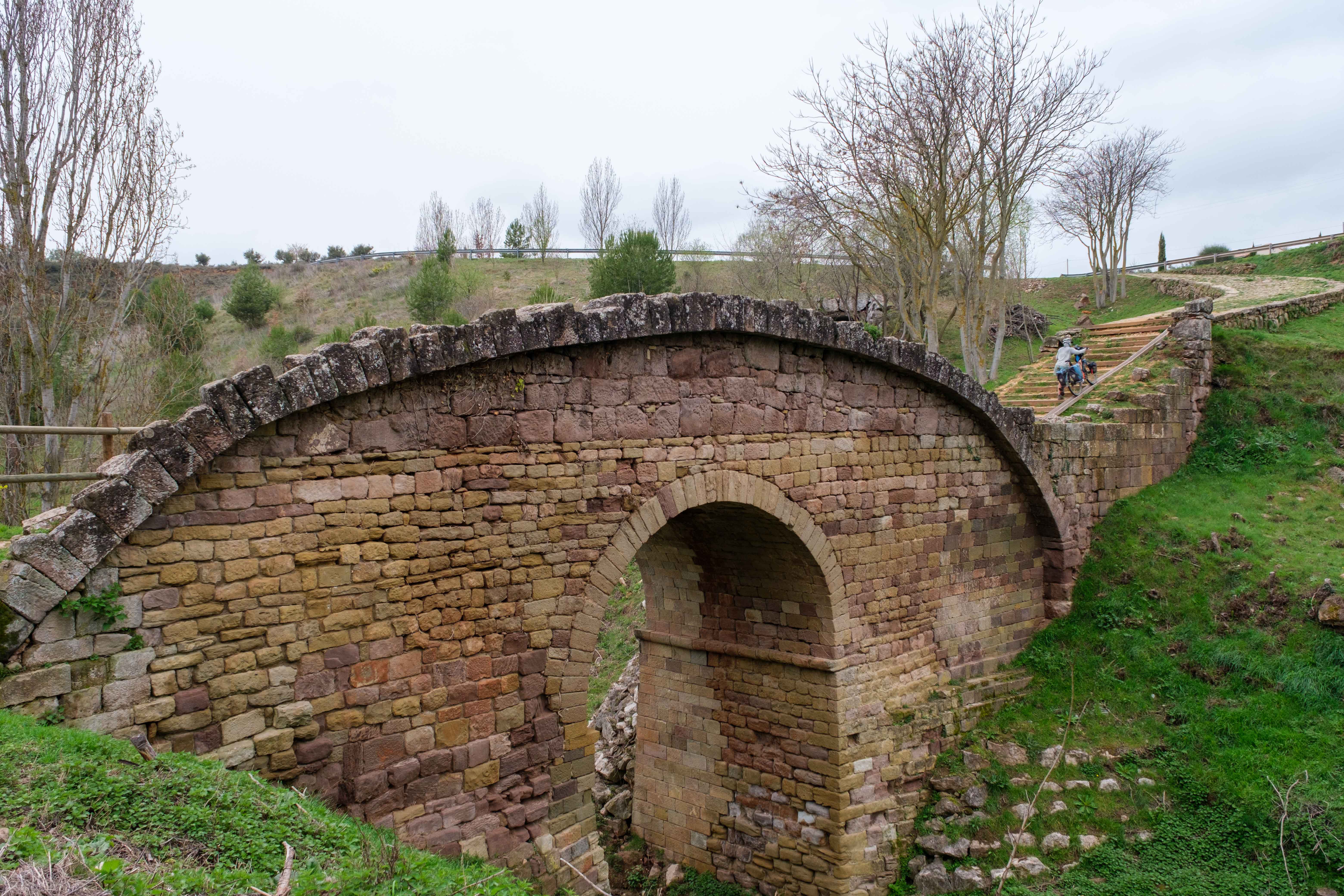
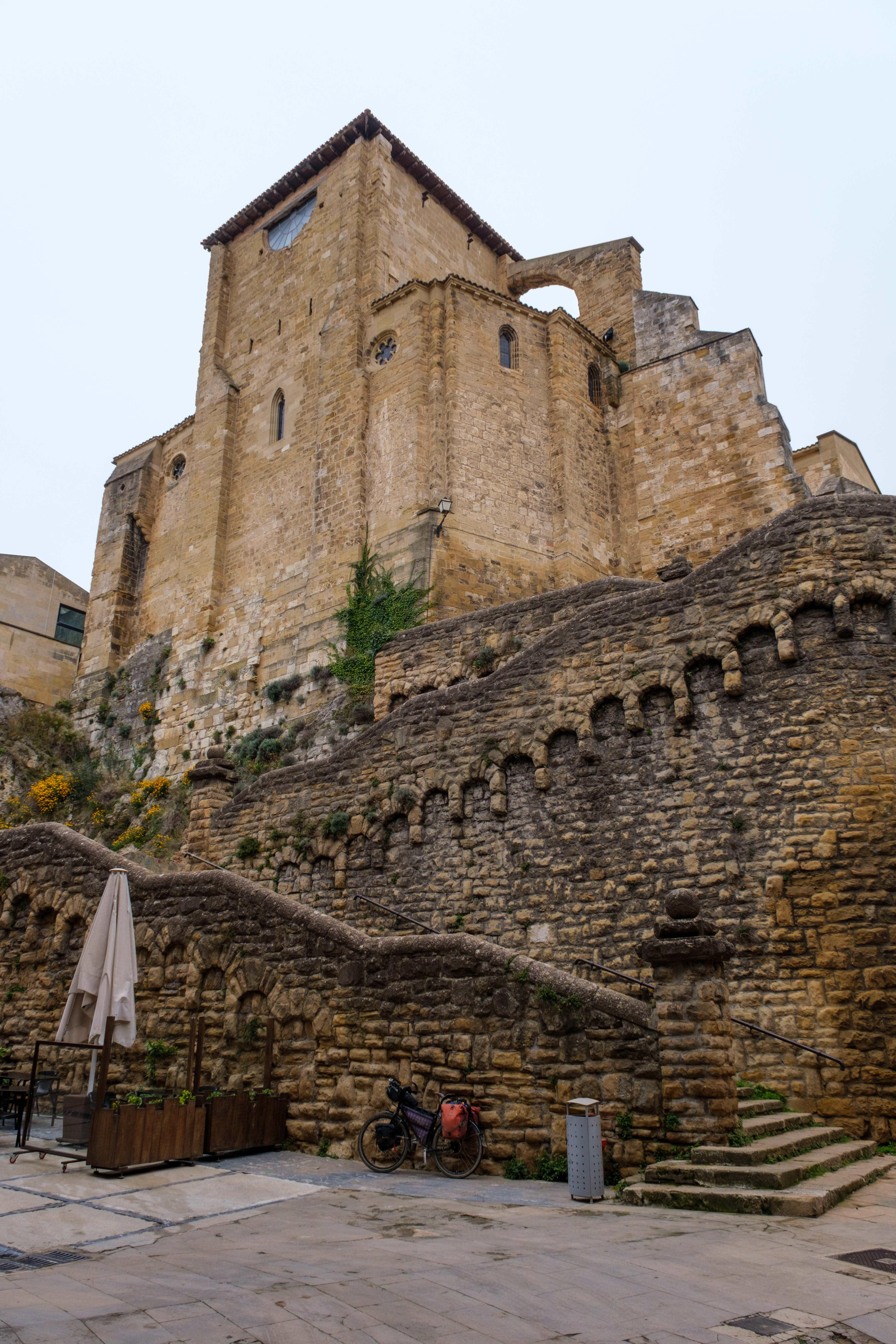
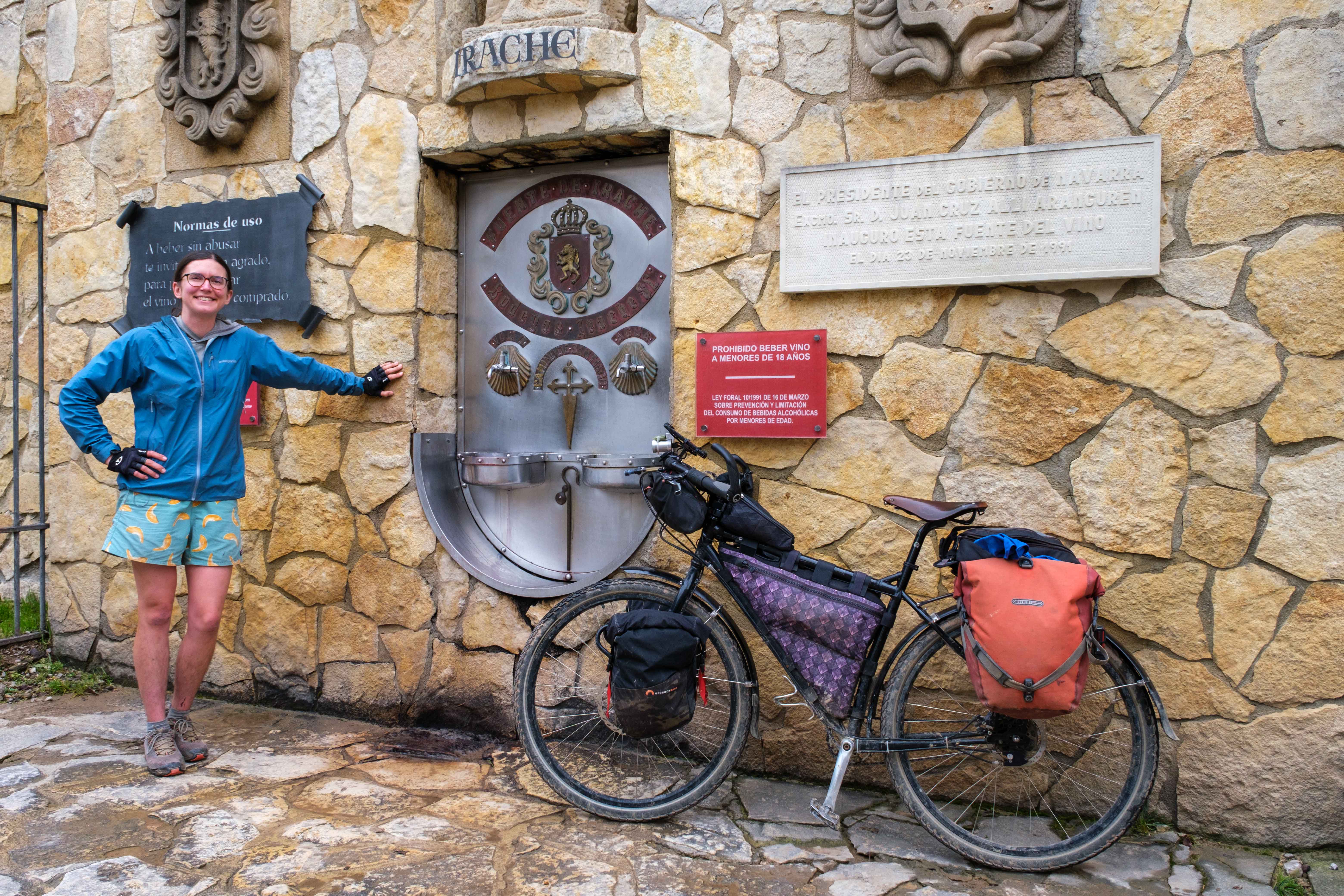
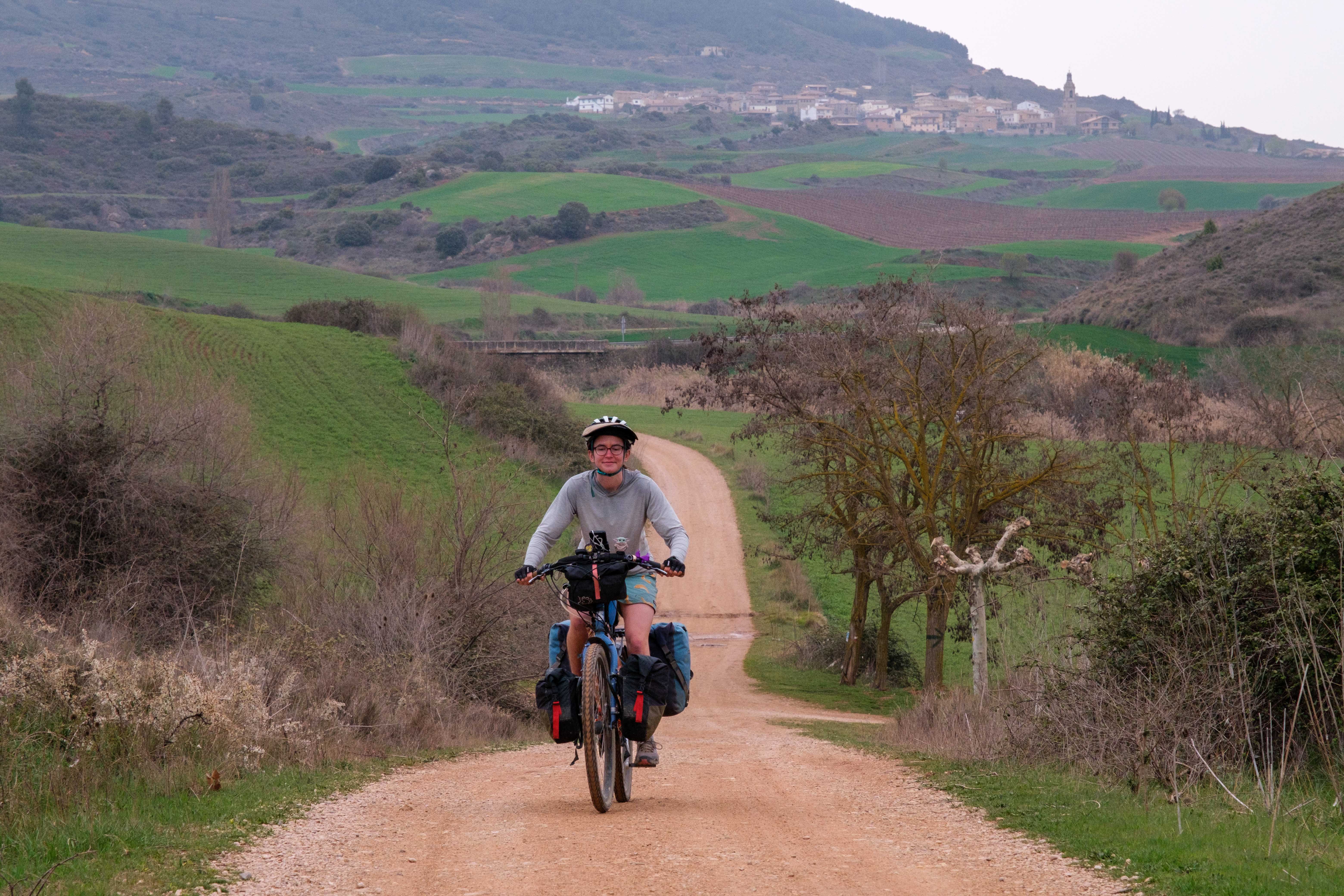
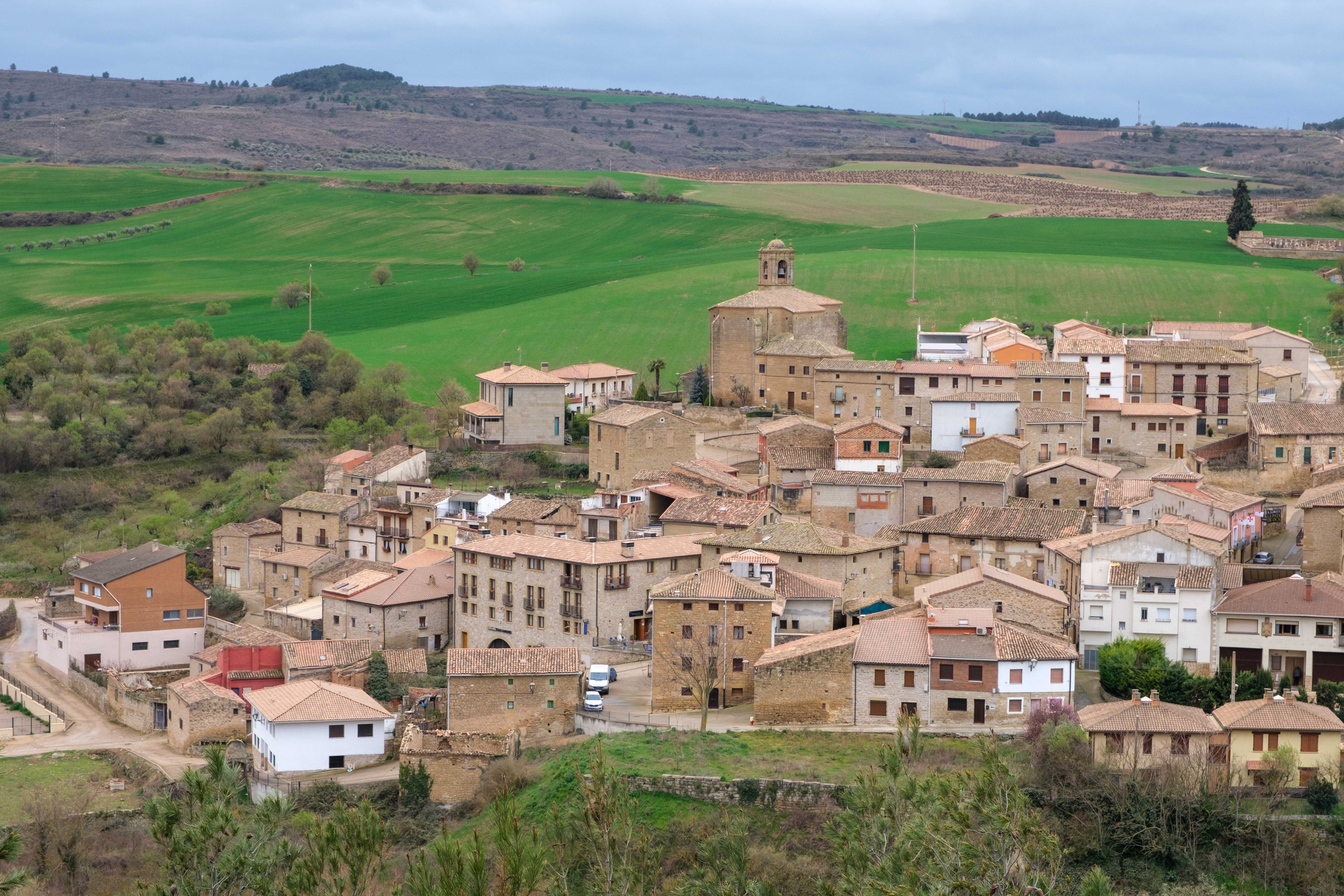
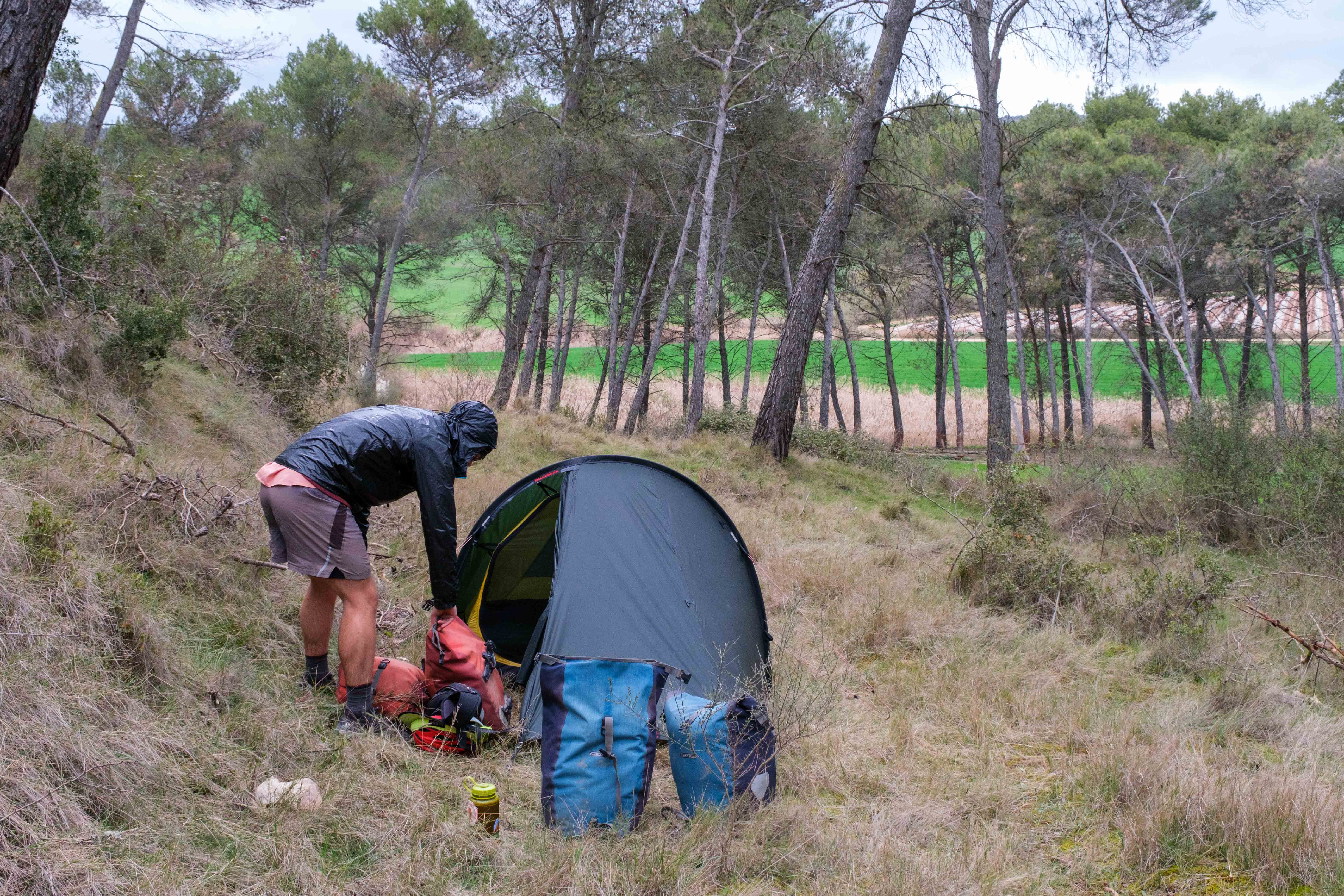
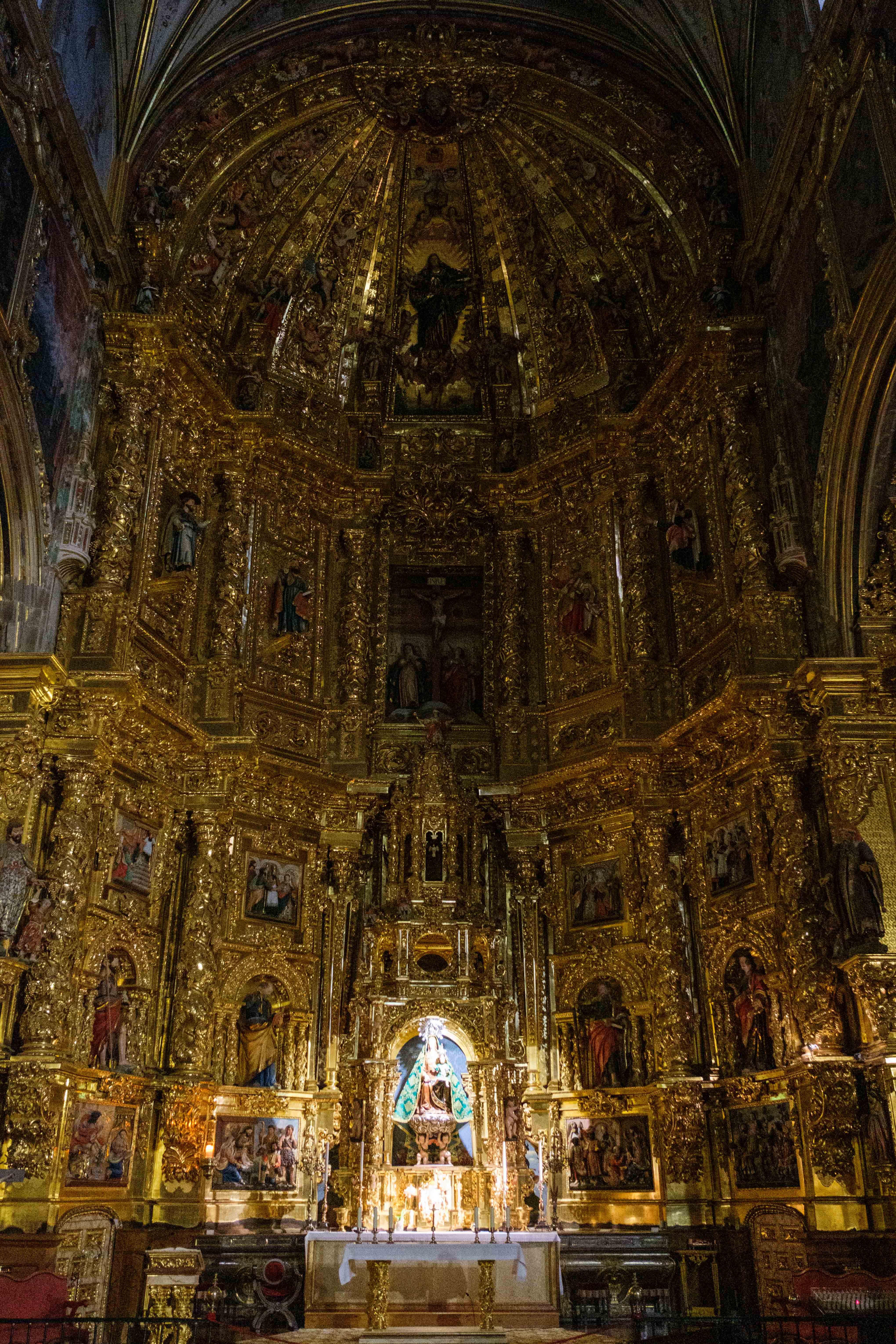
Mud, So Much Mud
One rainy day, we decided to be adventurous and ride the Camino rather than the road. We had ridden some gravel after rain and it wasn’t too bad, so we thought why not? Unfortunately, the trail went through a heinous clay pit and we got bogged down in sticky cement-like mud that was also filled with rocks.
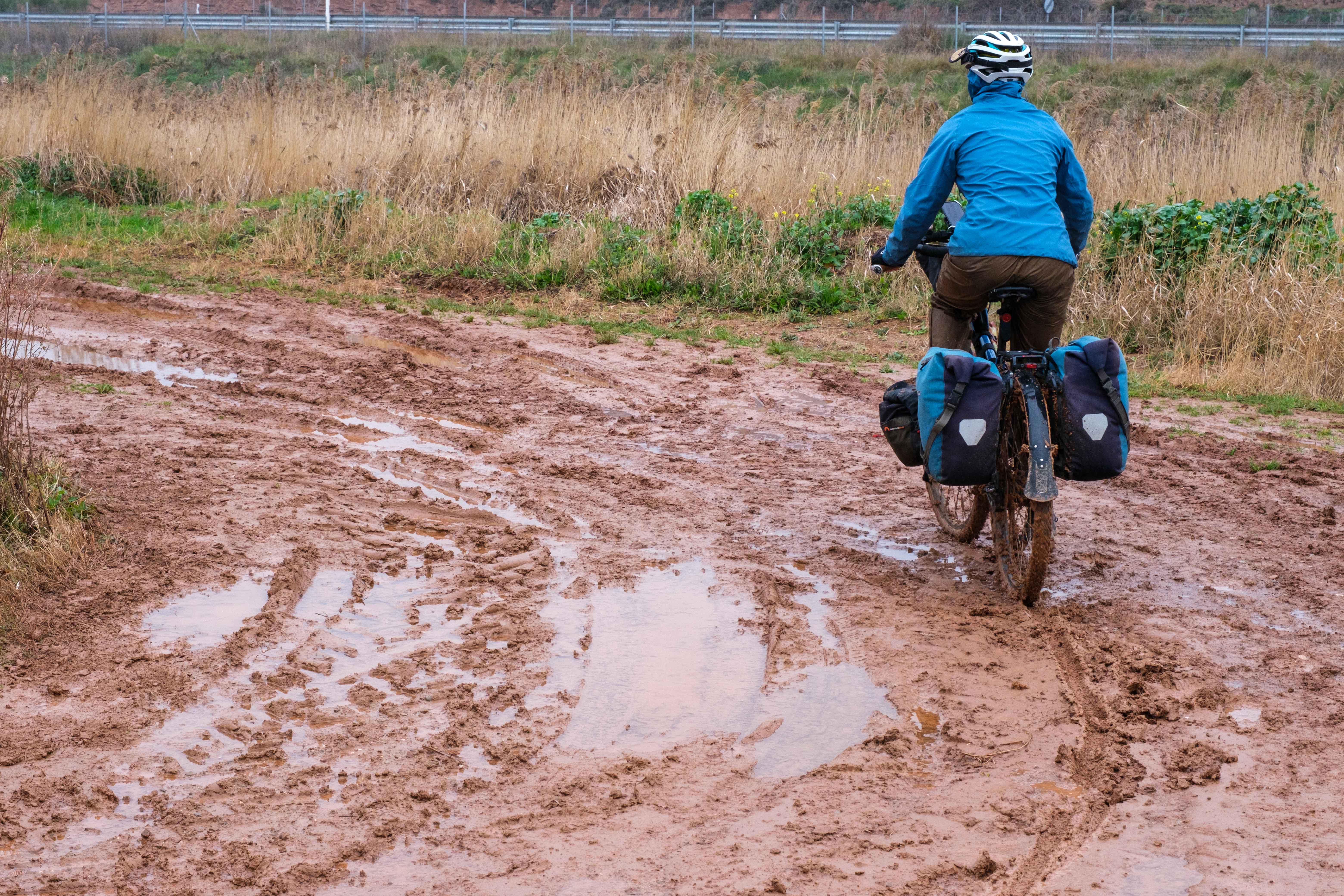
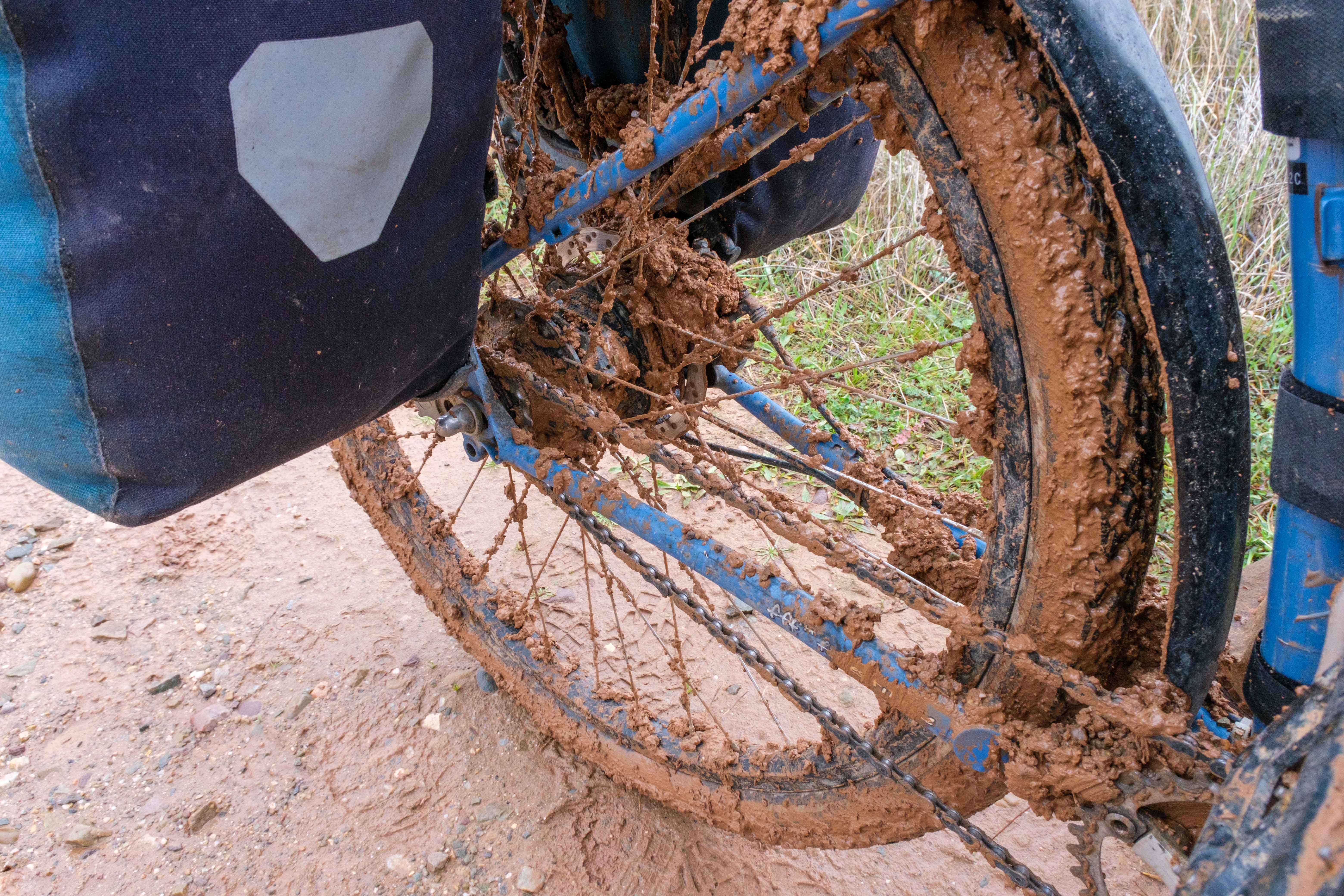
Jenny’s fenders were a bit too close to the wheel, which caused mud to really get jammed in between the wheel and fender. When she was anger-pedaling in frustration, a rock got caught between her brake and her Rohloff and actually bent a spoke! The spoke inevitable broke a few days after and resulted in a tedious fixing process.
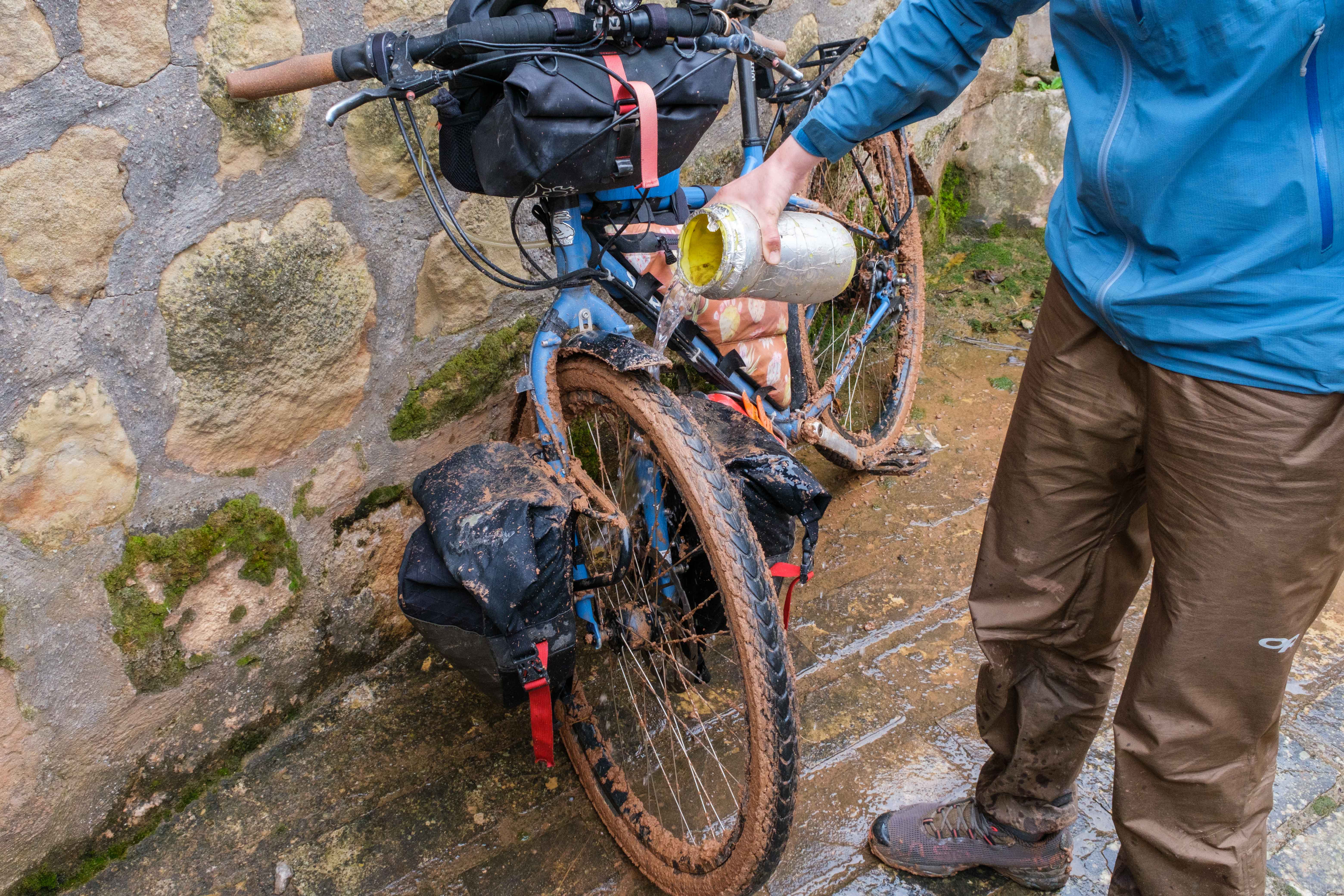
Detour to Pineda de la Sierra
We had some time to kill while we were waiting for our Rohloff oil change kits to be delivered to Burgos, so we rode up into the mountains to Pineda de la Sierra. The ride was beautiful and had very little traffic, and Pineda was a picturesque small town with snowy mountains as its backdrop.
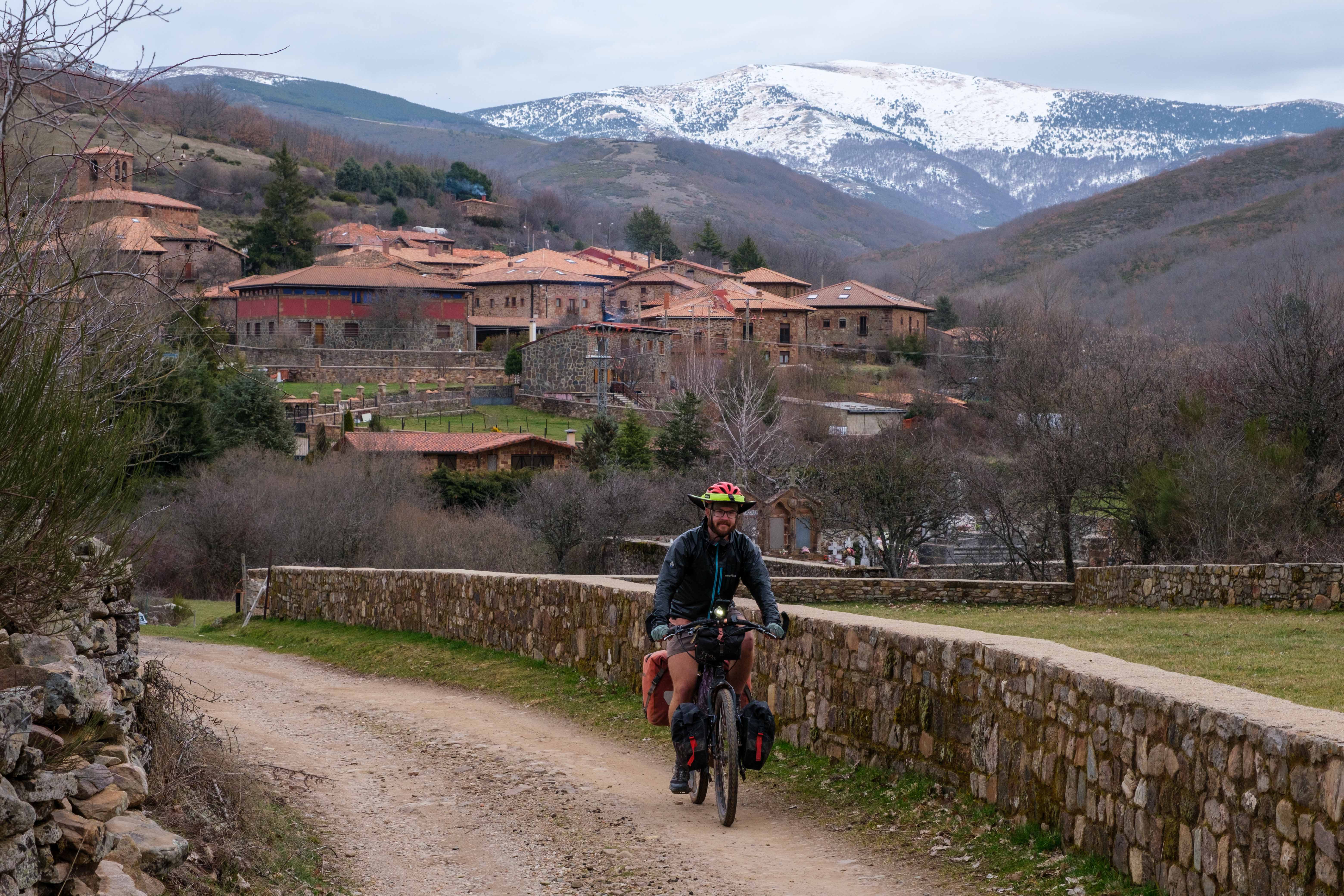
We rode a wonderful greenway from Pineda to Arlanzón called the Vía verde de la Sierra de la Demanda. The trail wove through quiet forests and along a gorgeous mountain lake, and we really enjoyed the peaceful trail.
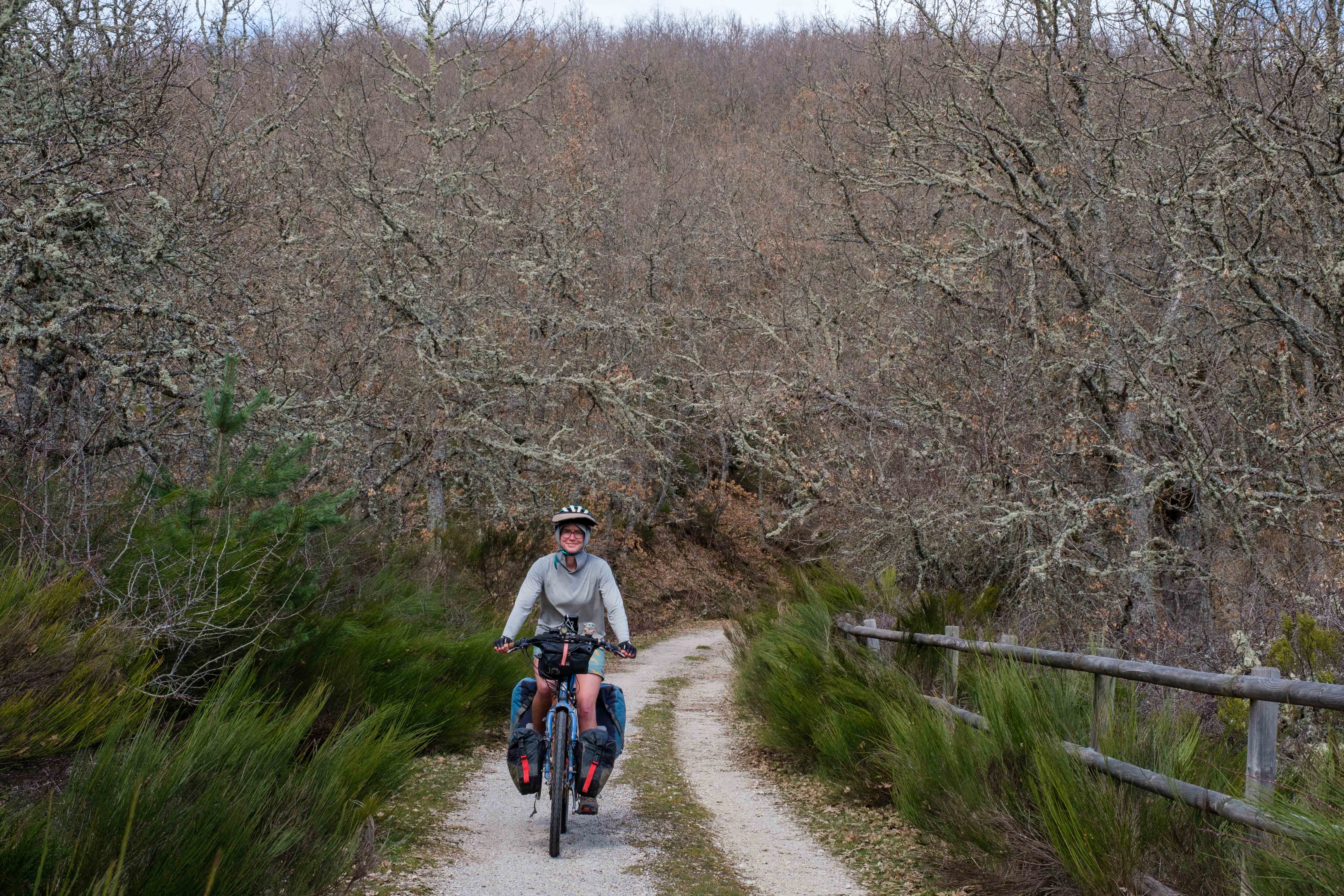
Burgos to Leon
Our package still hadn’t arrived in Burgos when we got there, so we stayed a couple days in the town. Burgos is home to a spectacular cathedral, though we decided not to pay the entrance fee. After being in France, where all of the churches are free, it was difficult to cough up the money to go inside.
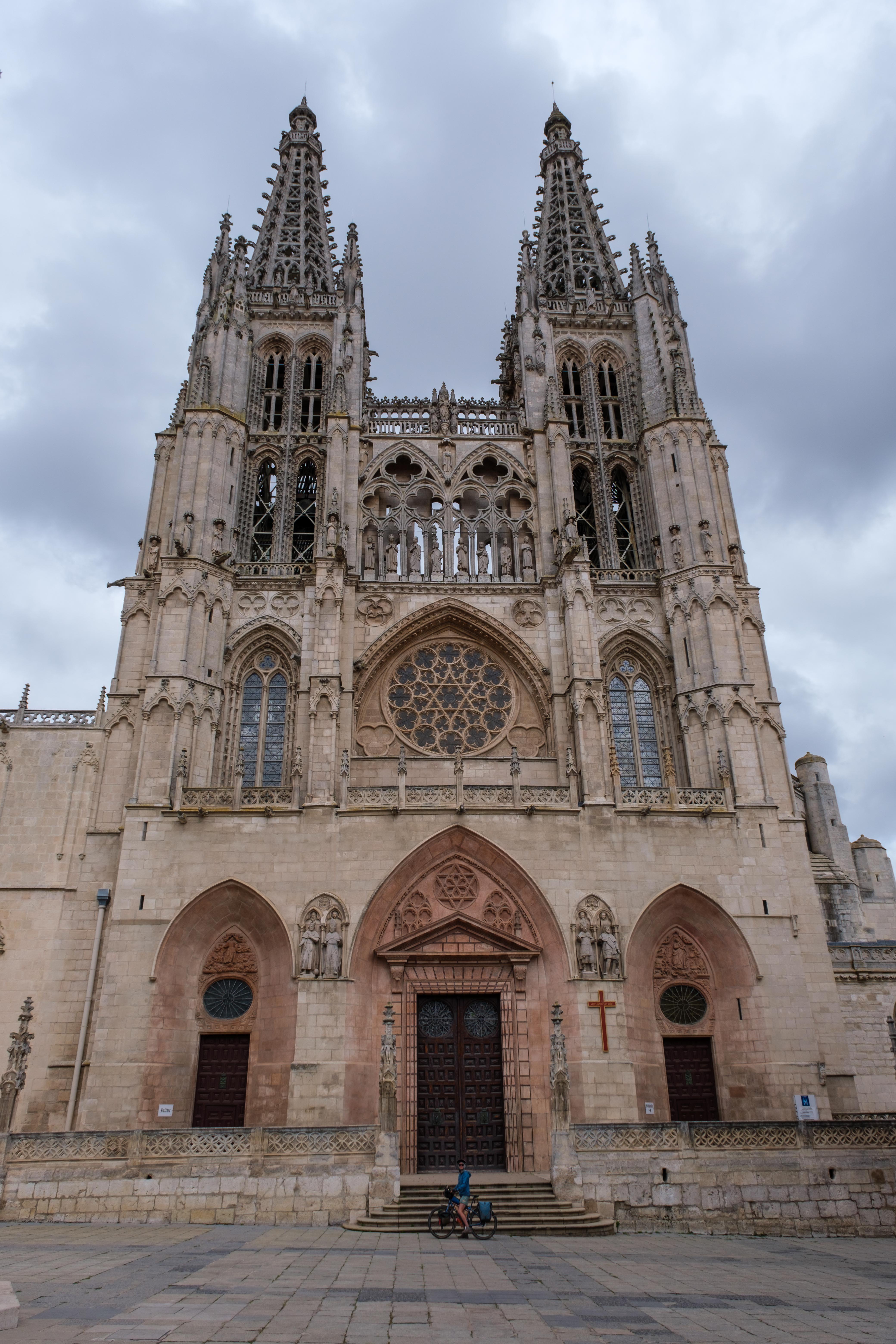
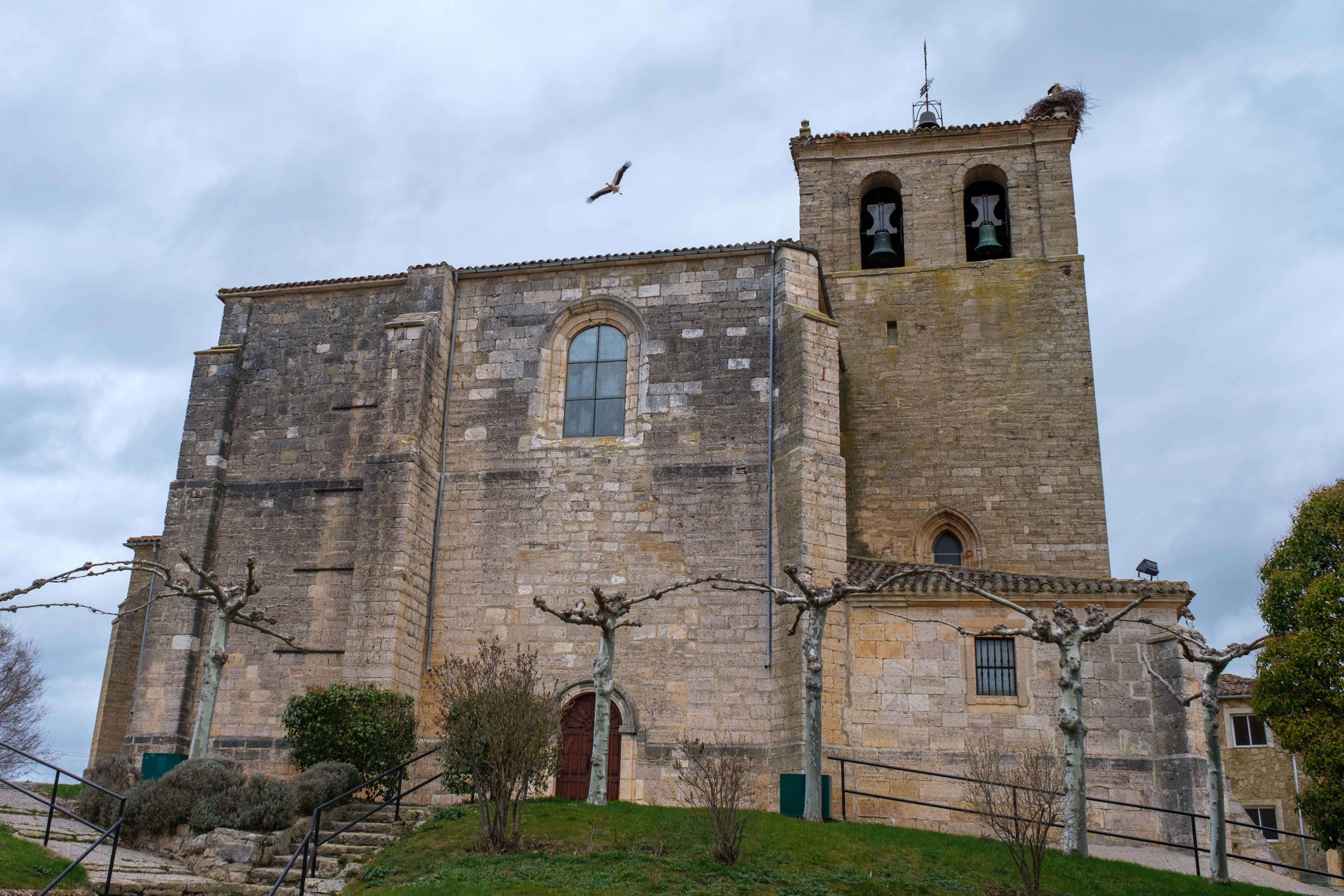
The section between Burgos and Leon was very flat and not the most scenic – lots of endless farmland to ride through. The hiking trail was right next to a paved road for most of the way, and it seemed like it would be a mentally challenging area to walk through for so long.
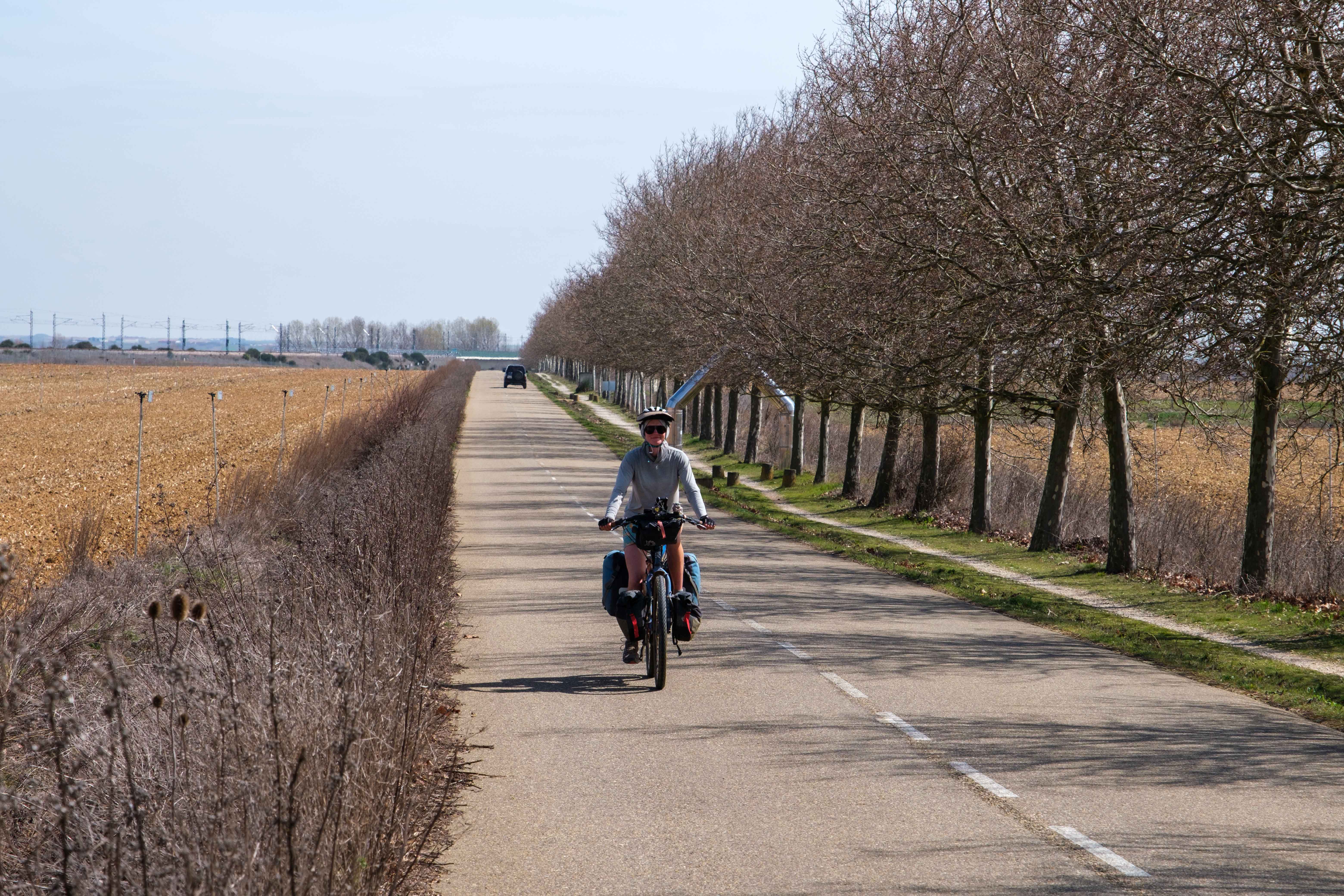
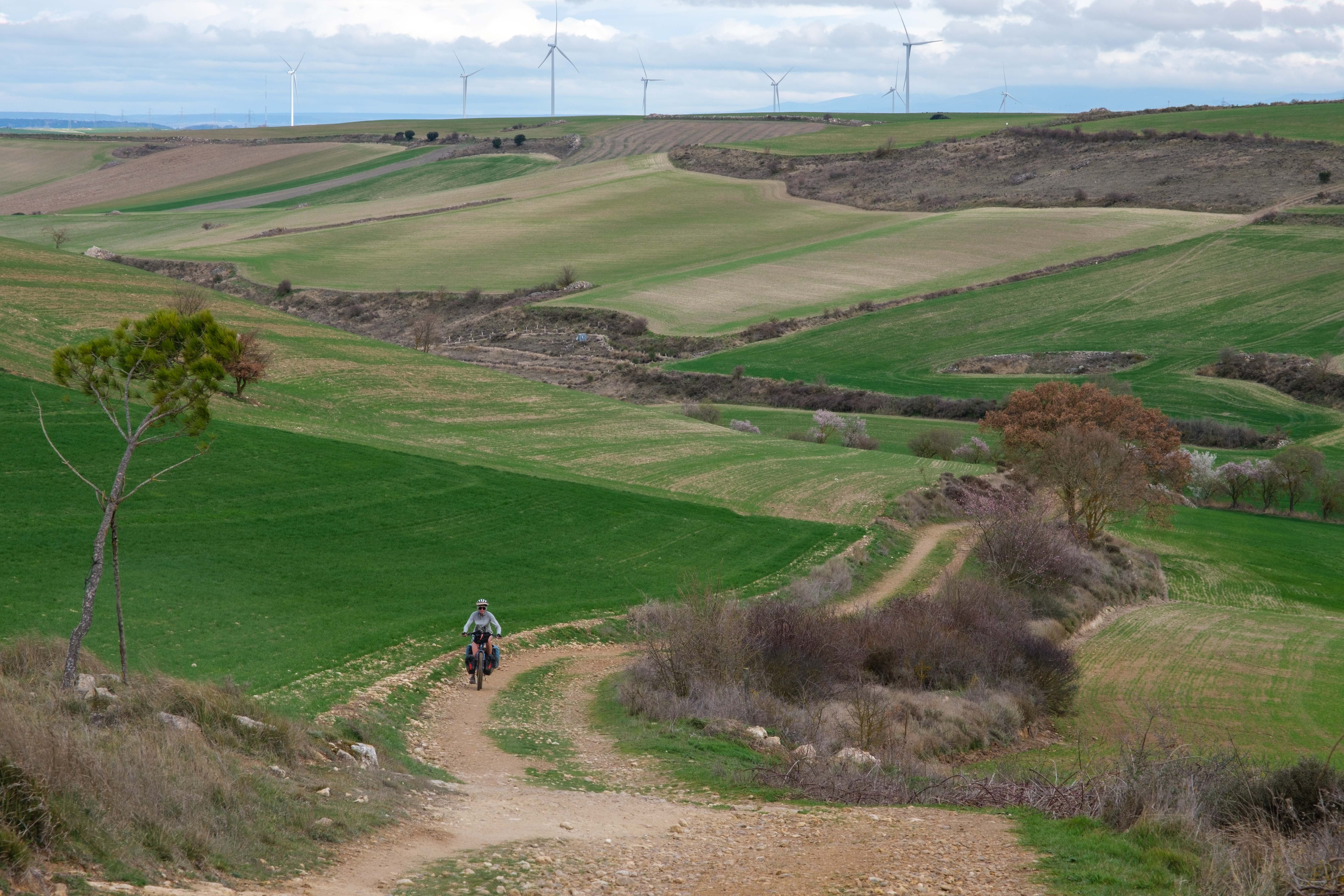
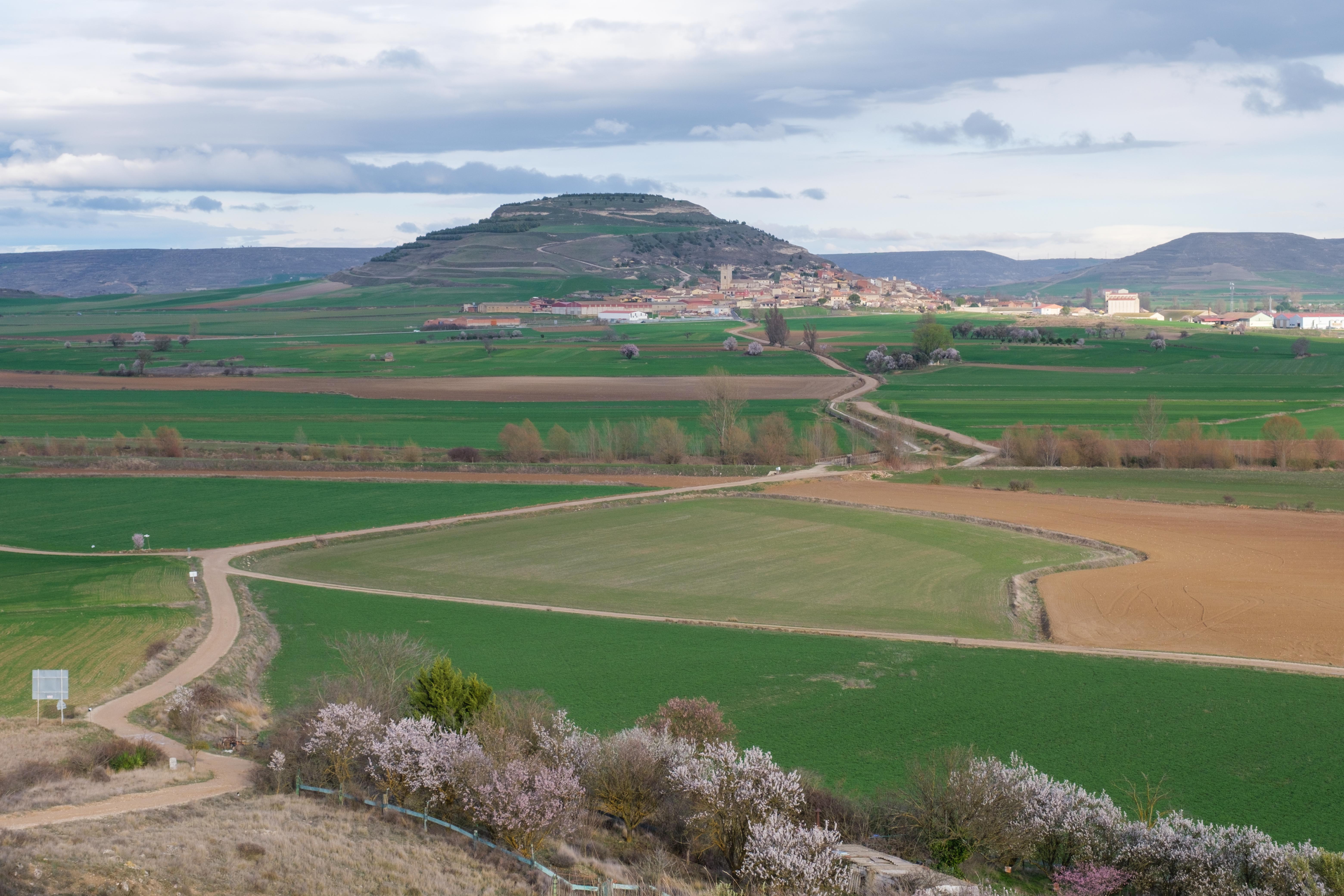
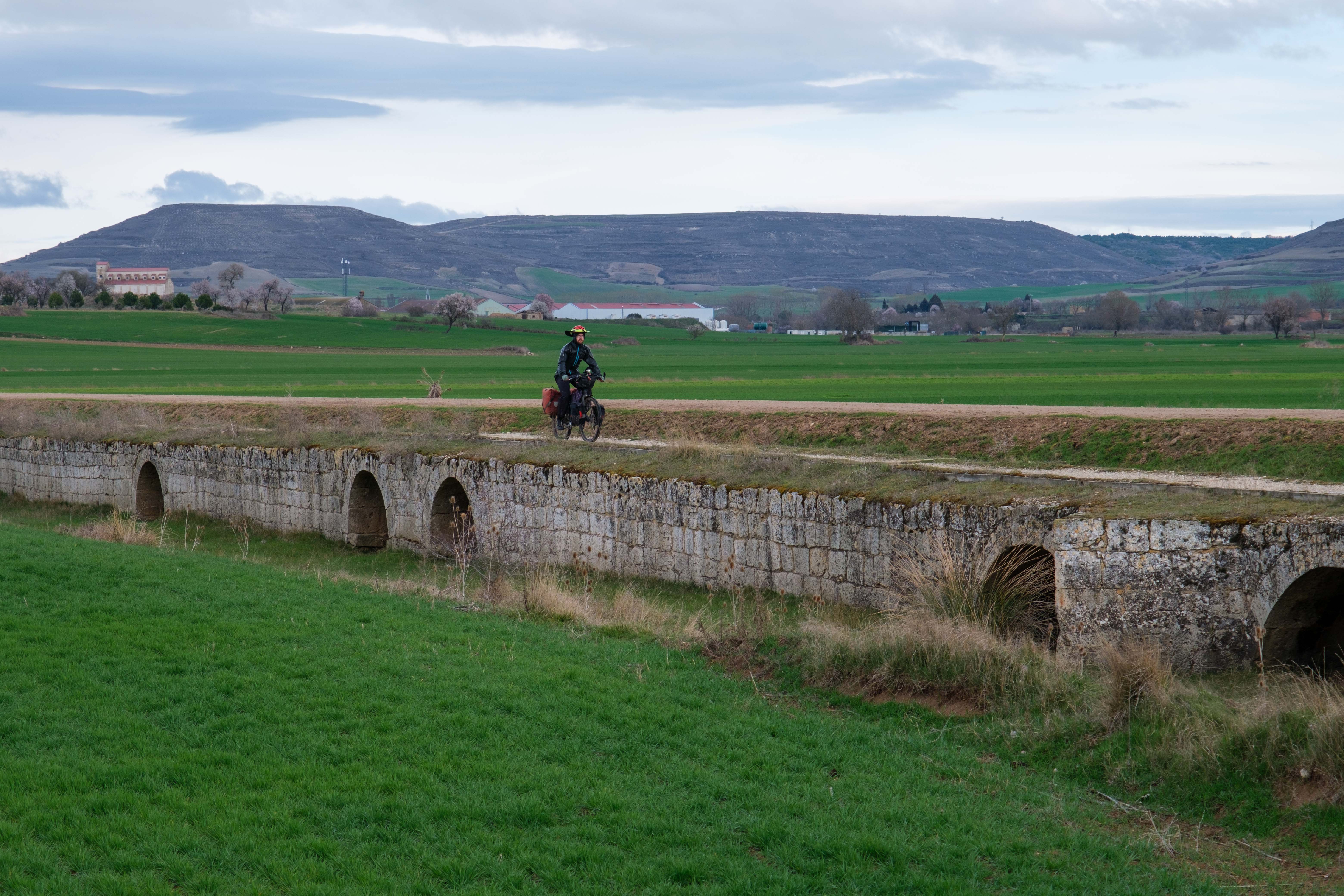
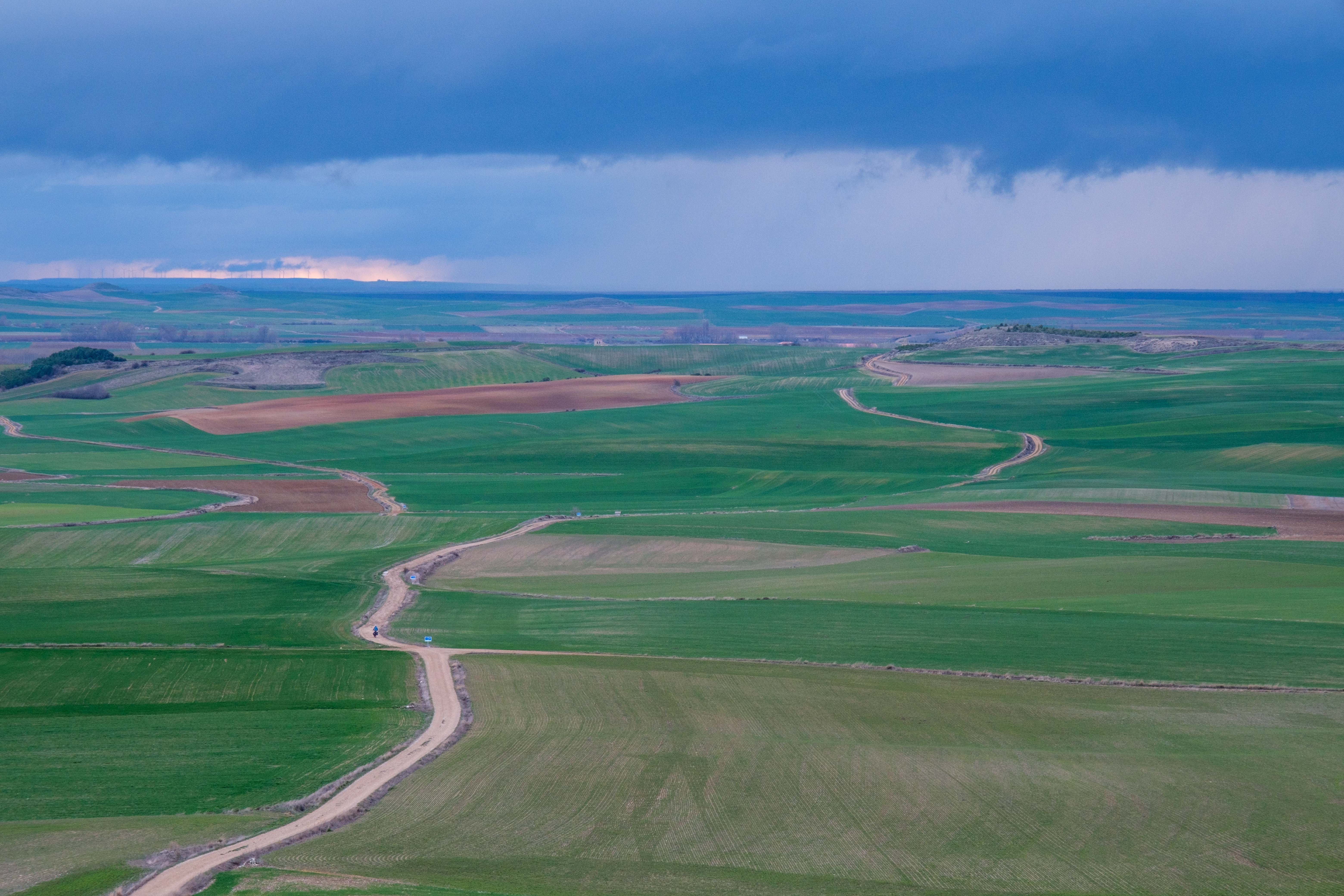
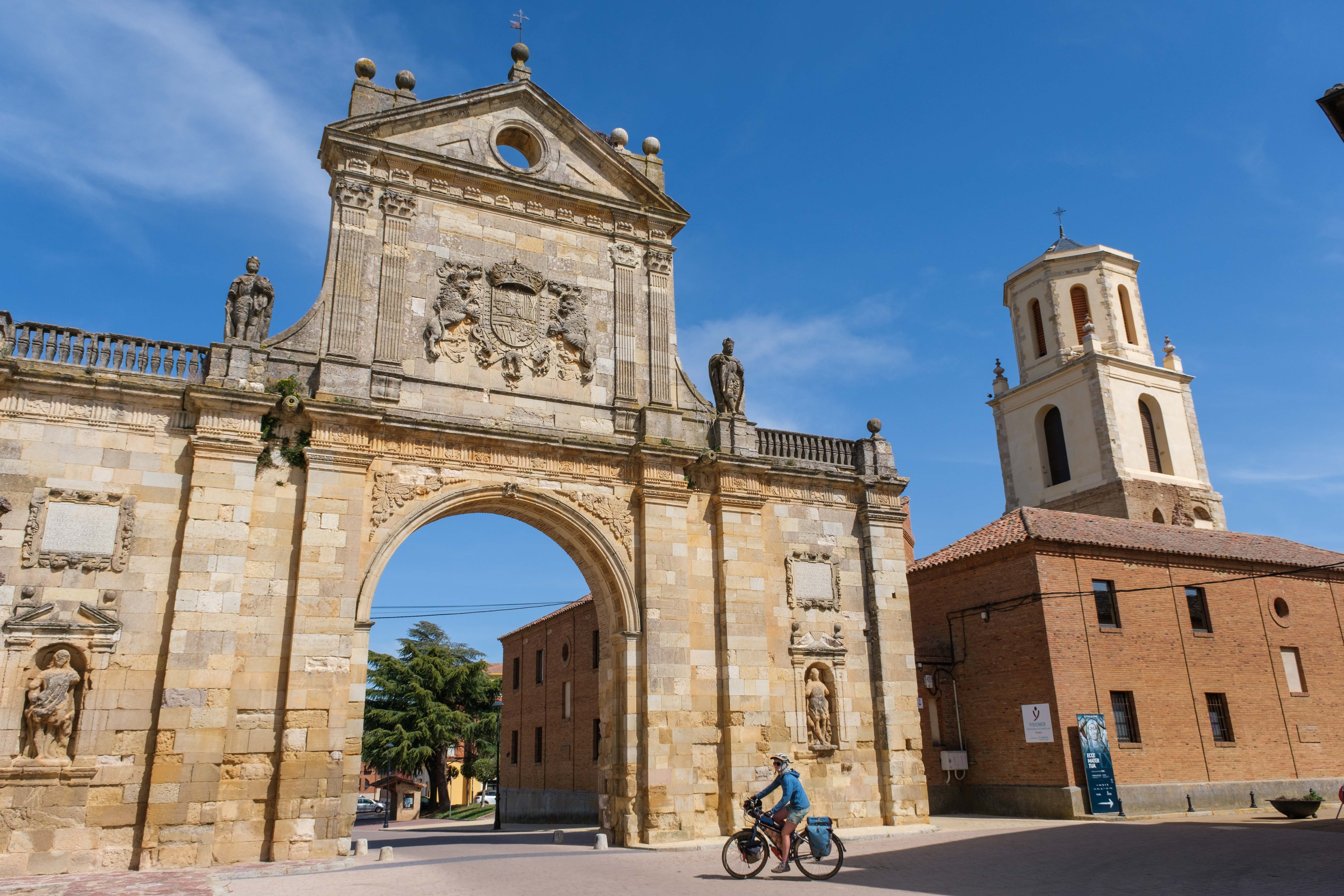
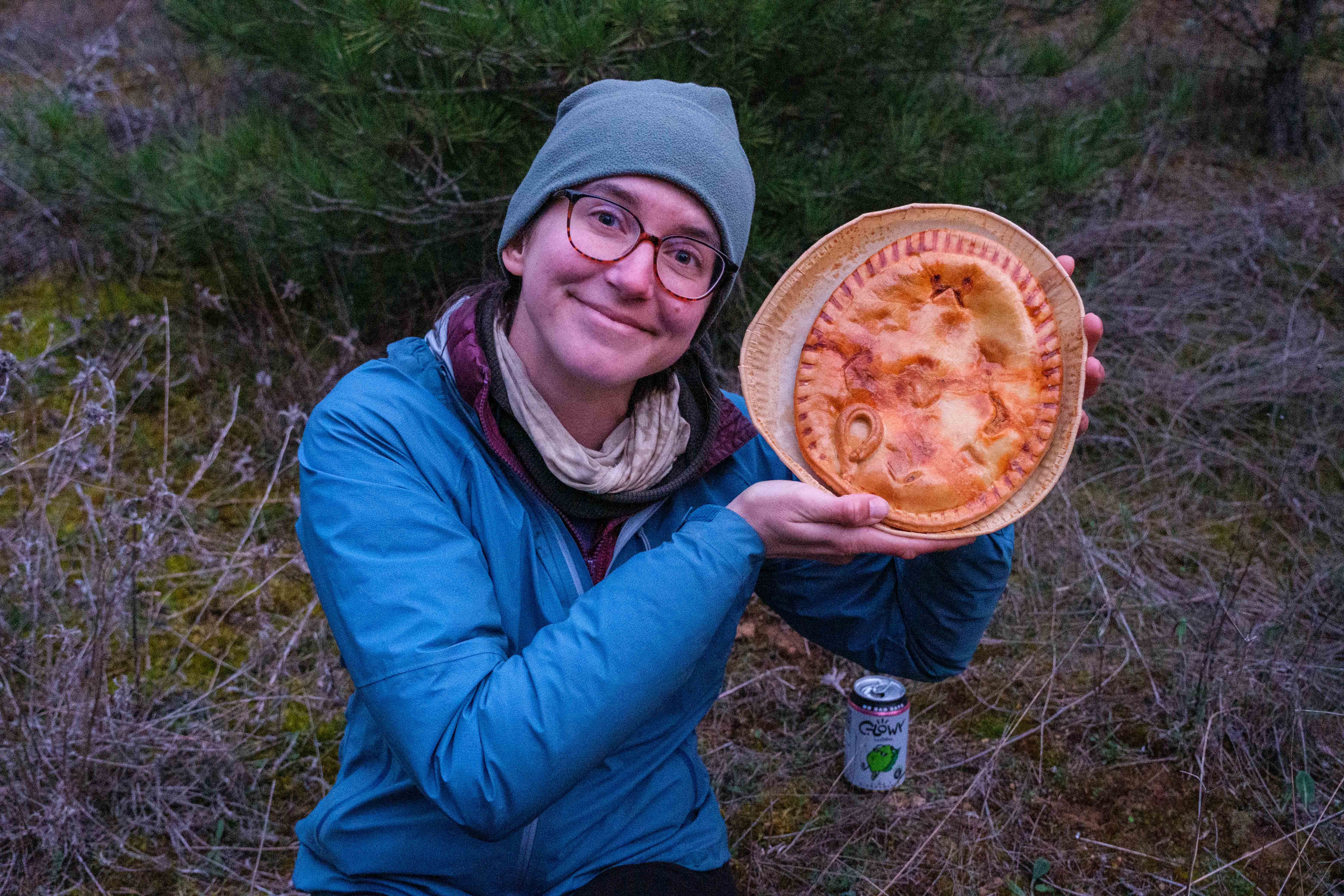
Leon to Santiago
After Leon, the route gets a bit more mountainous before heading into Santiago. The highest point was around 4,000 feet, and we had to push our bikes for quite a long way on a steep side road. As was the case throughout the Camino, there were endless interesting towns with many historic site to see.
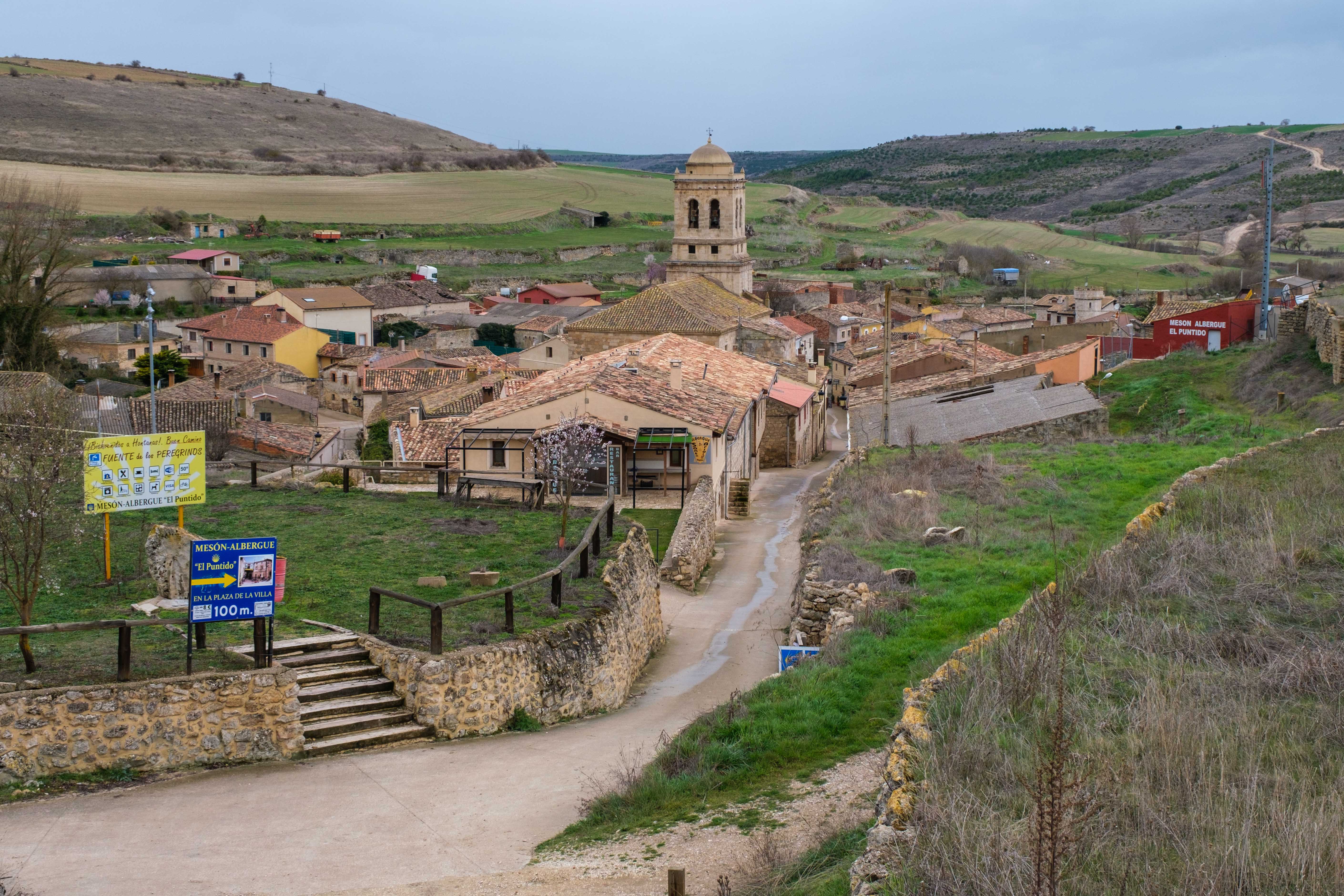
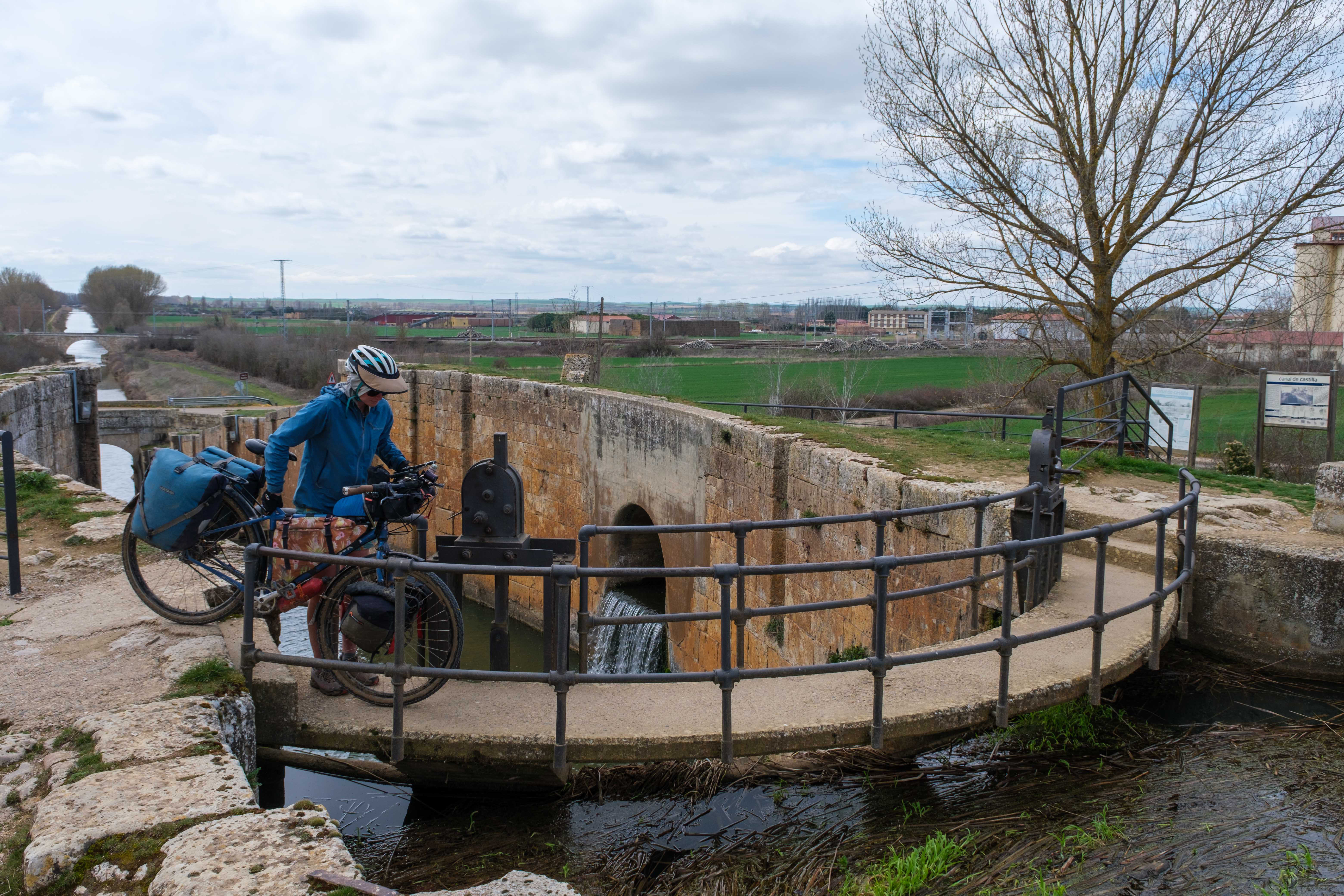
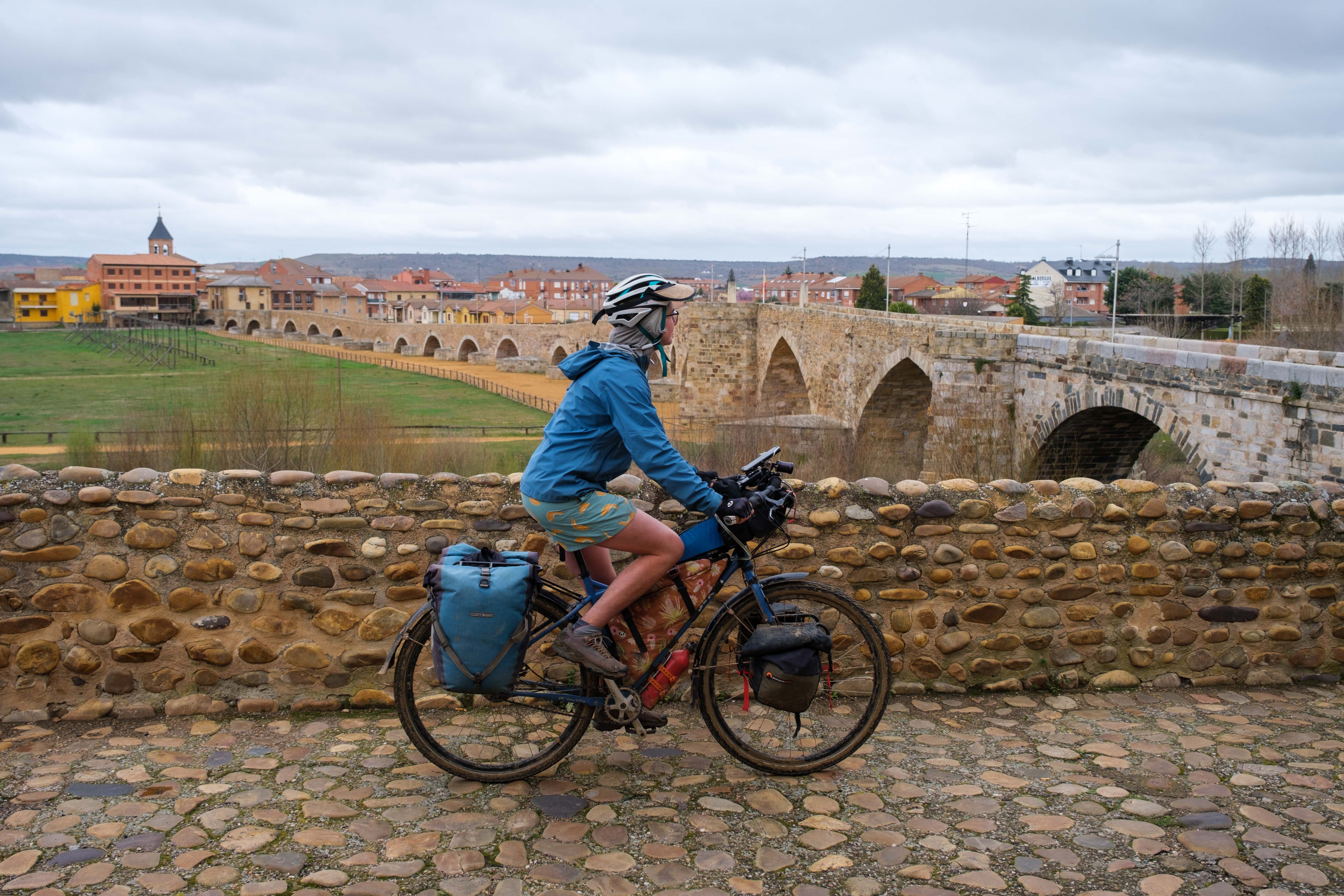
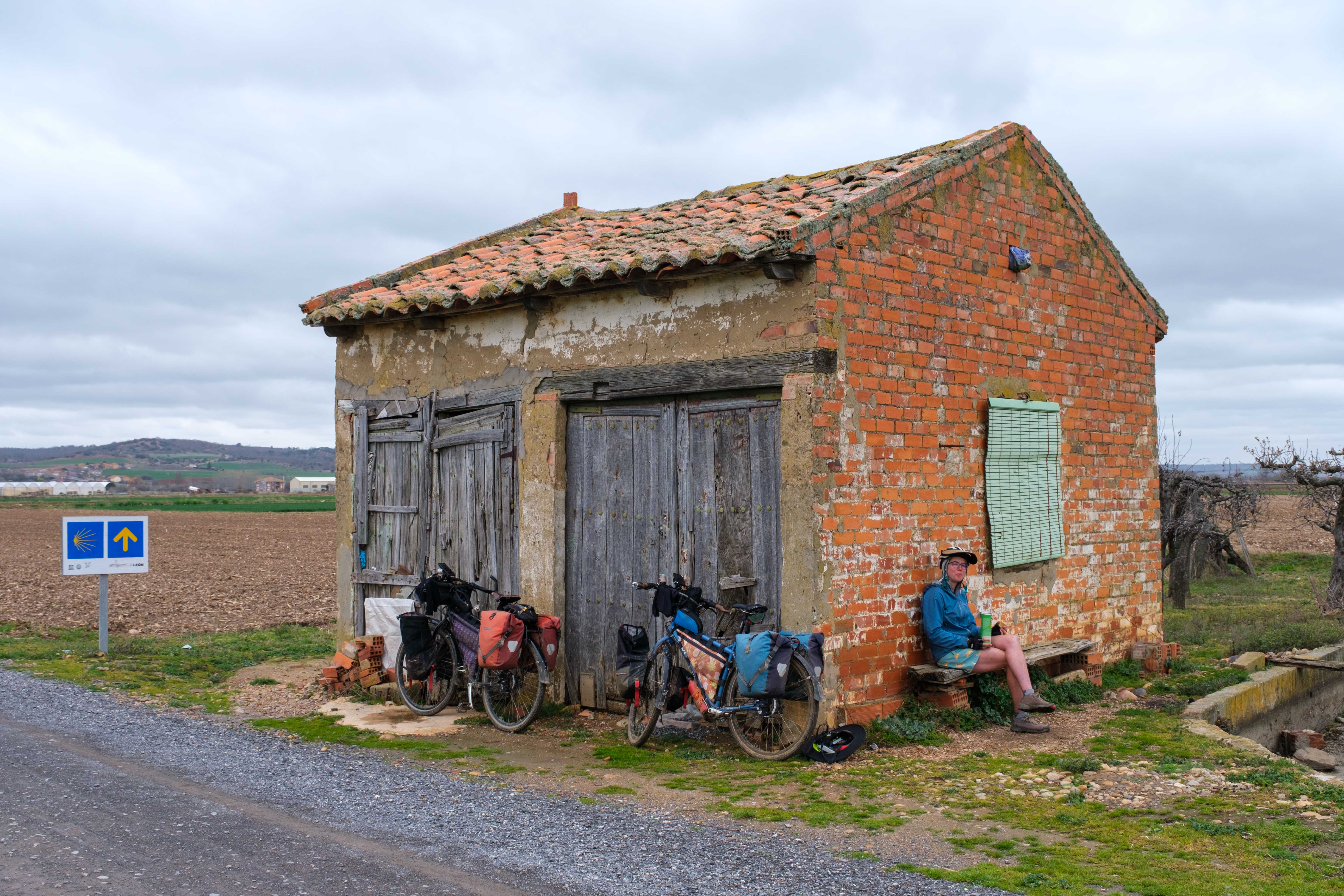
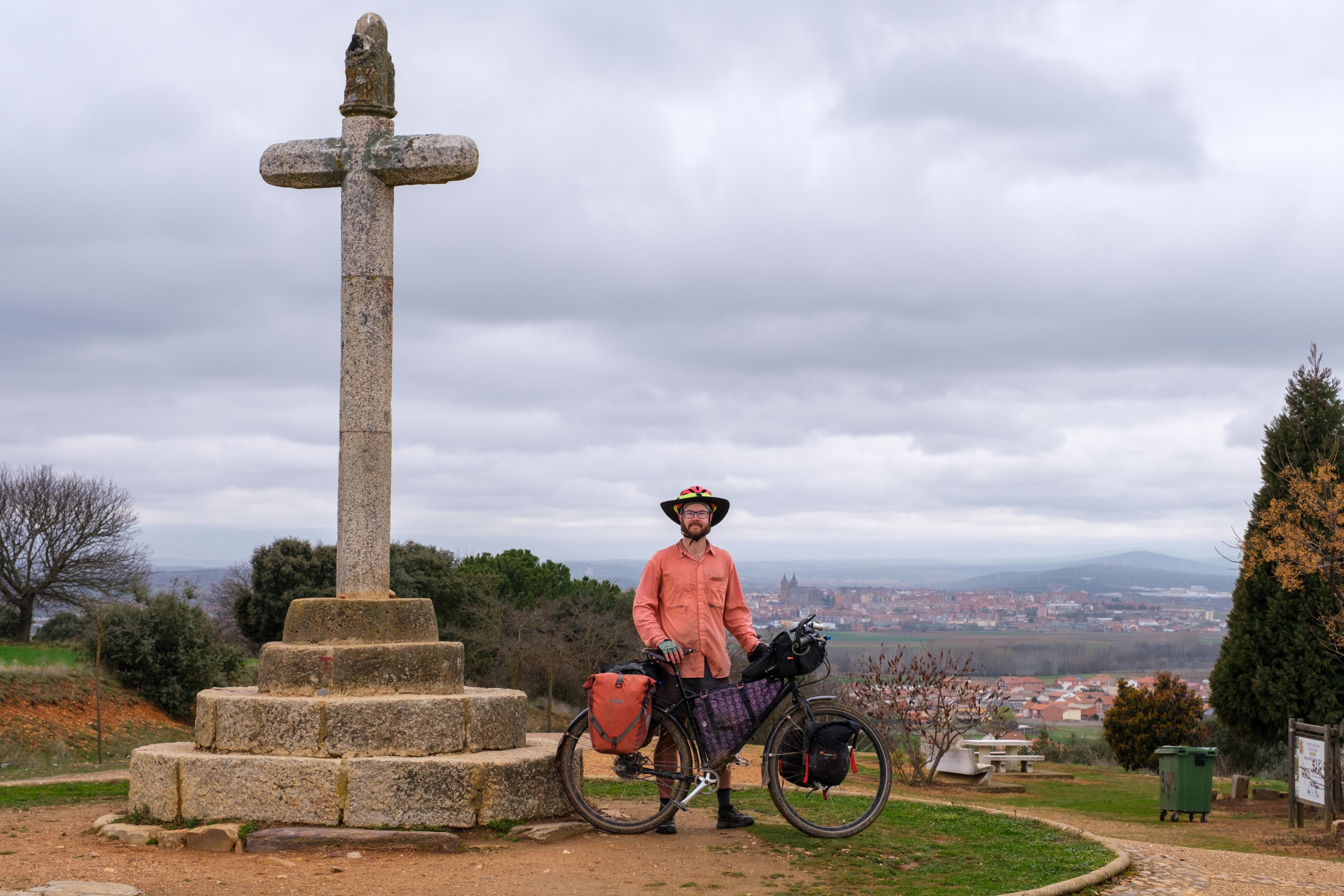
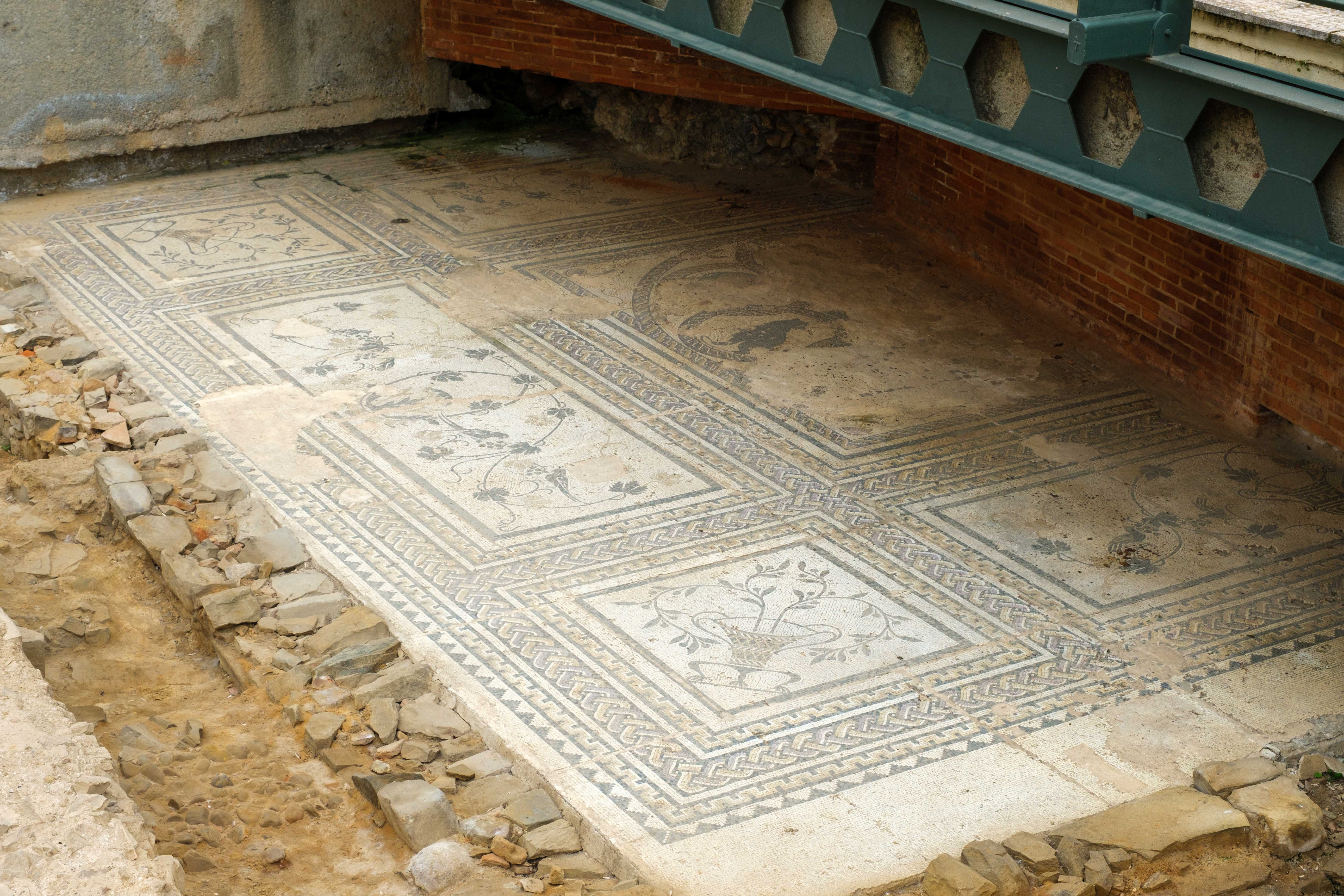
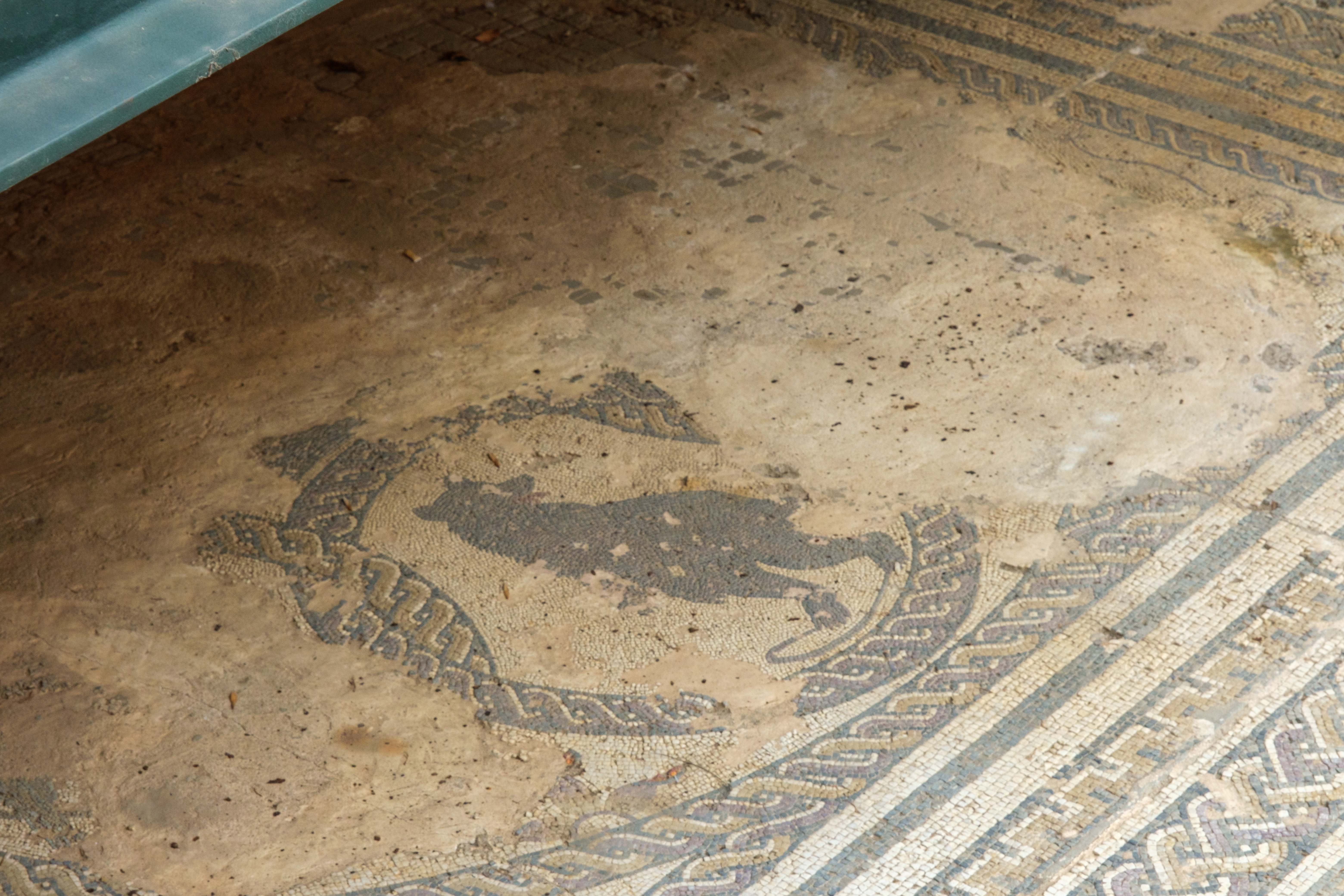
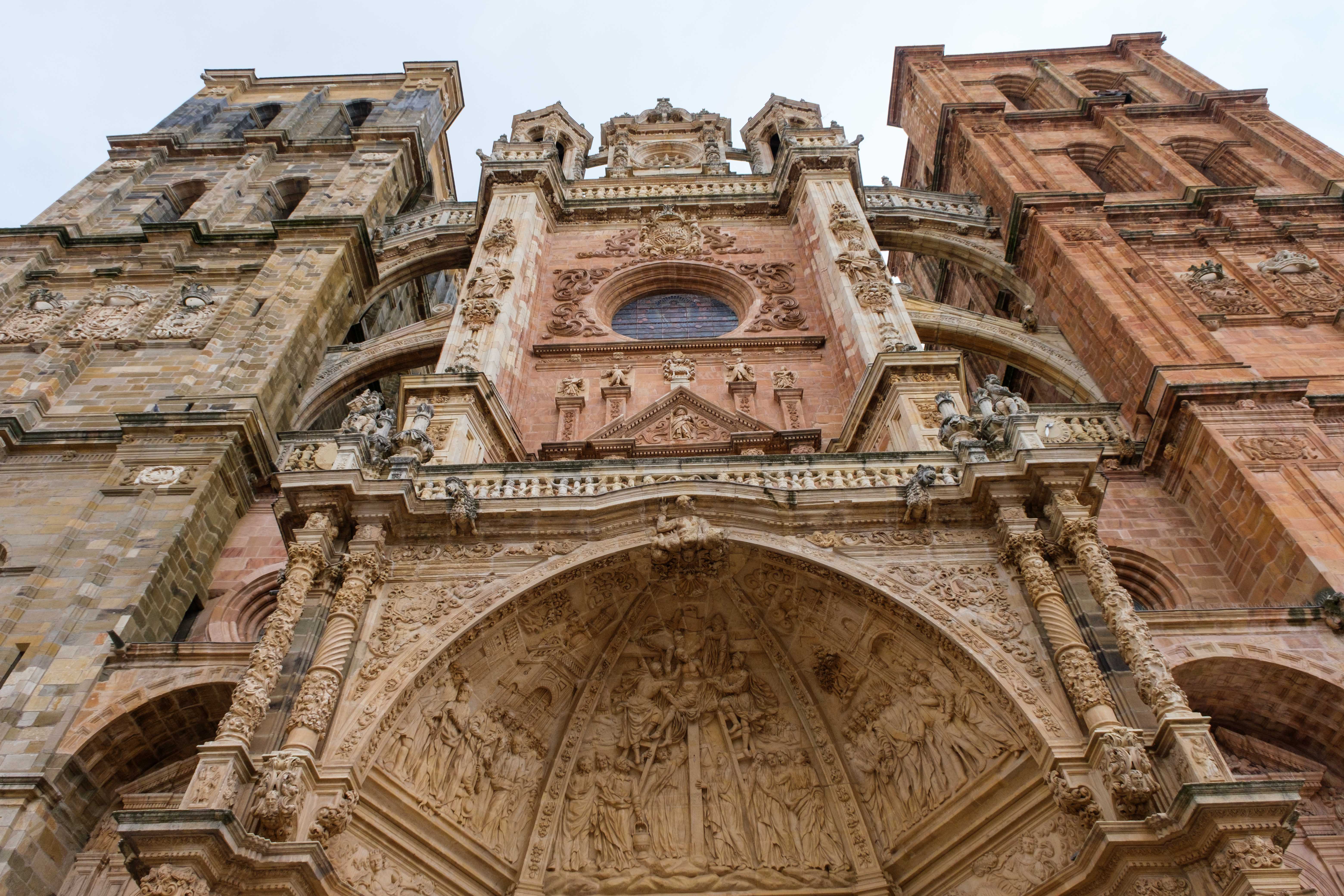
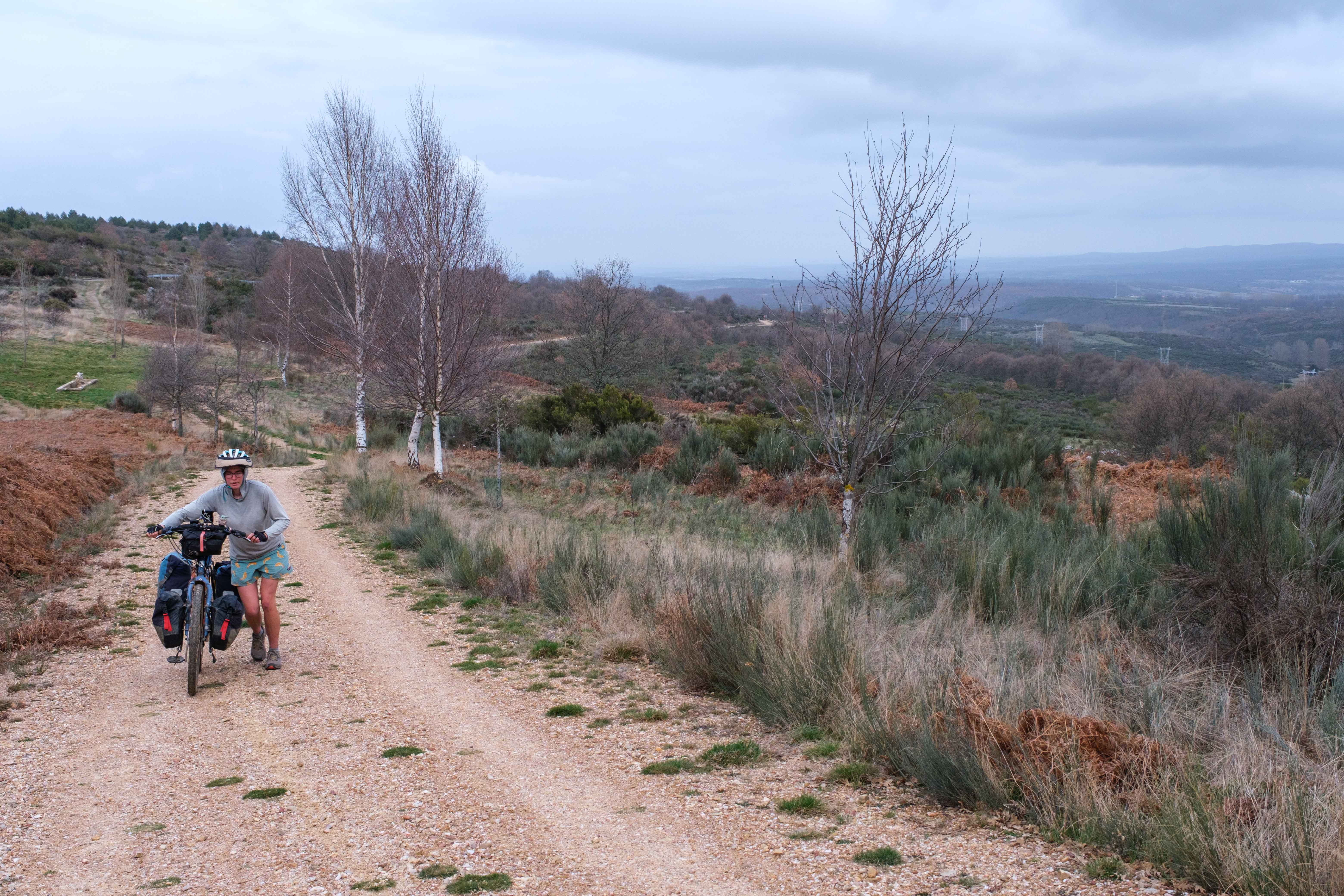
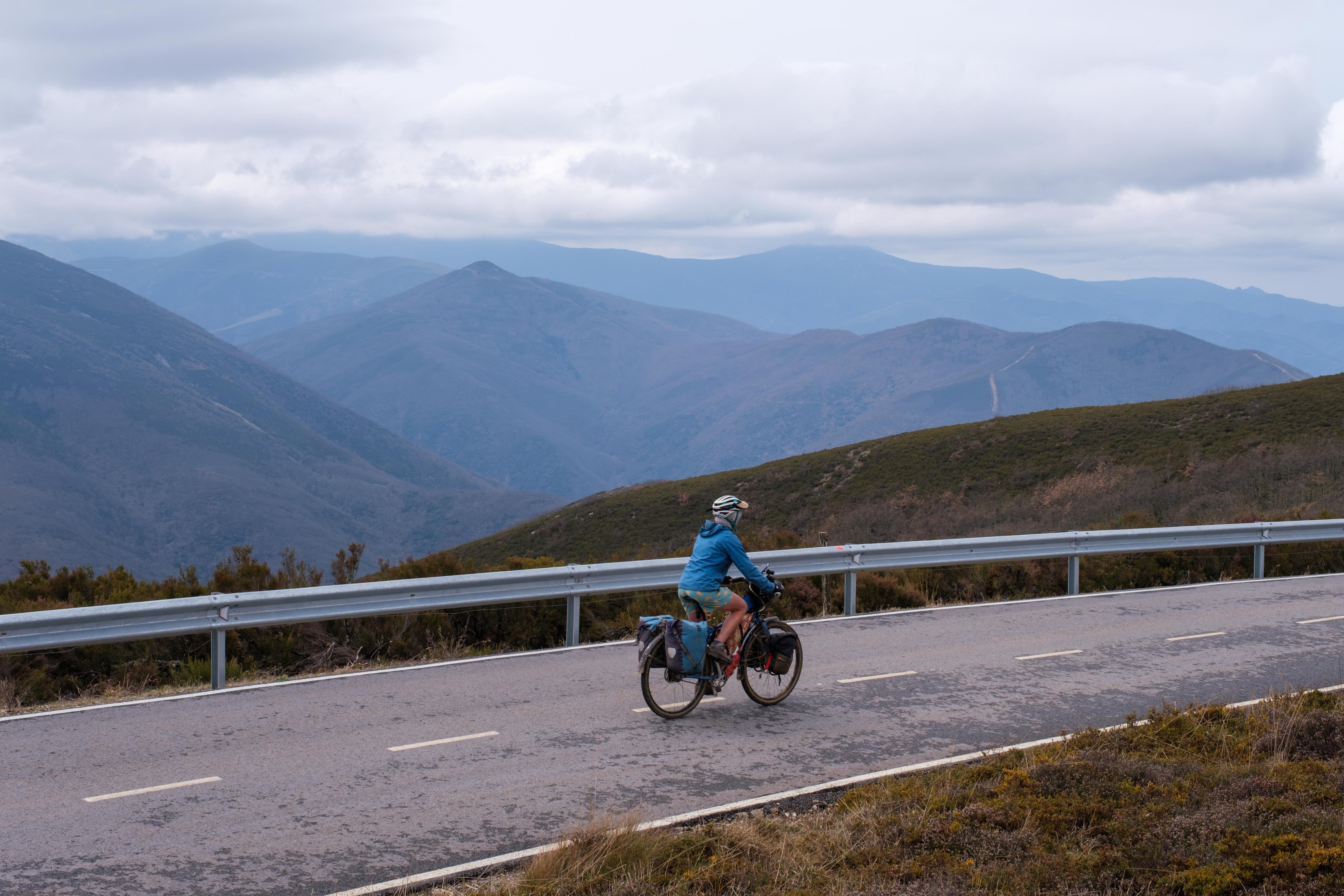
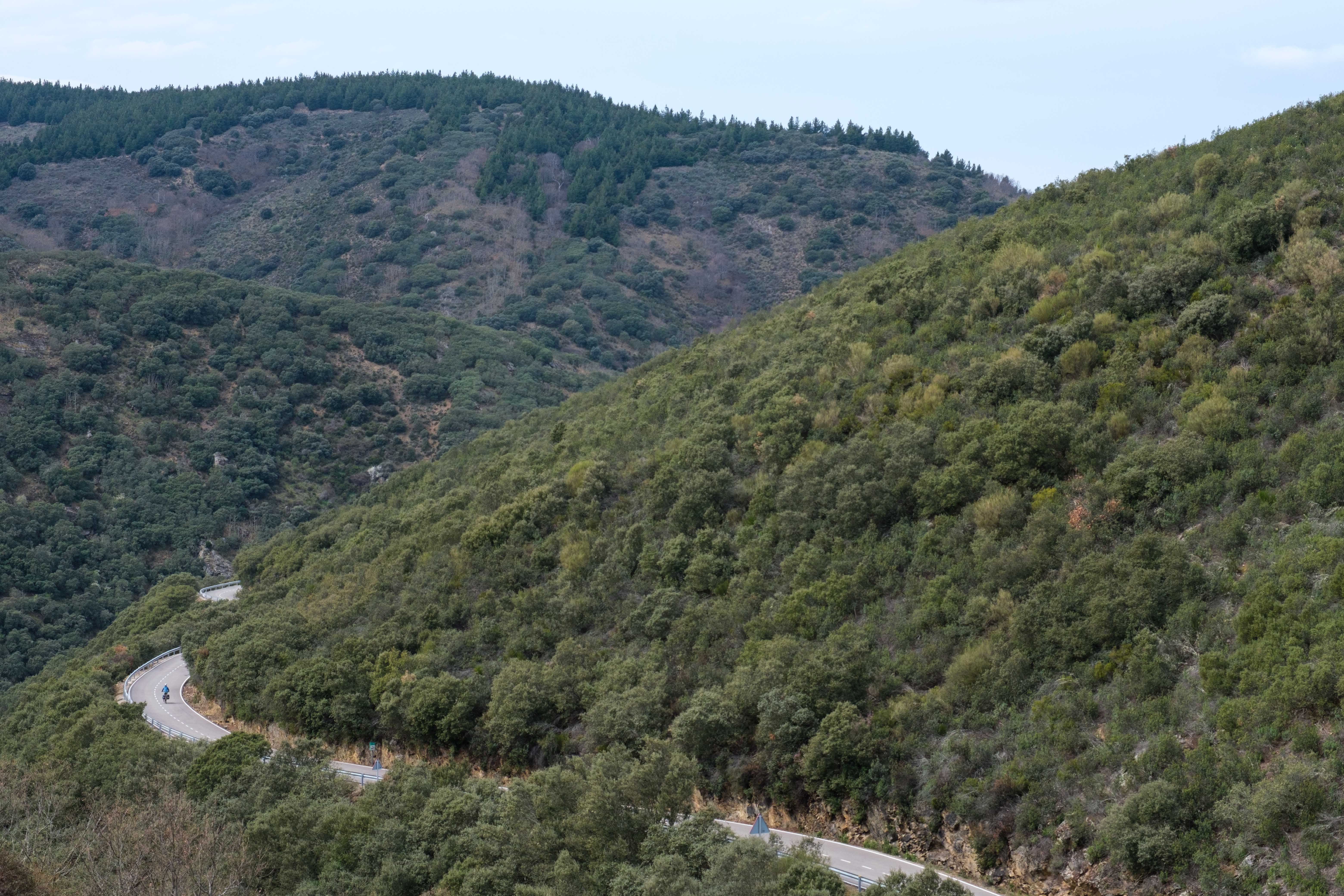
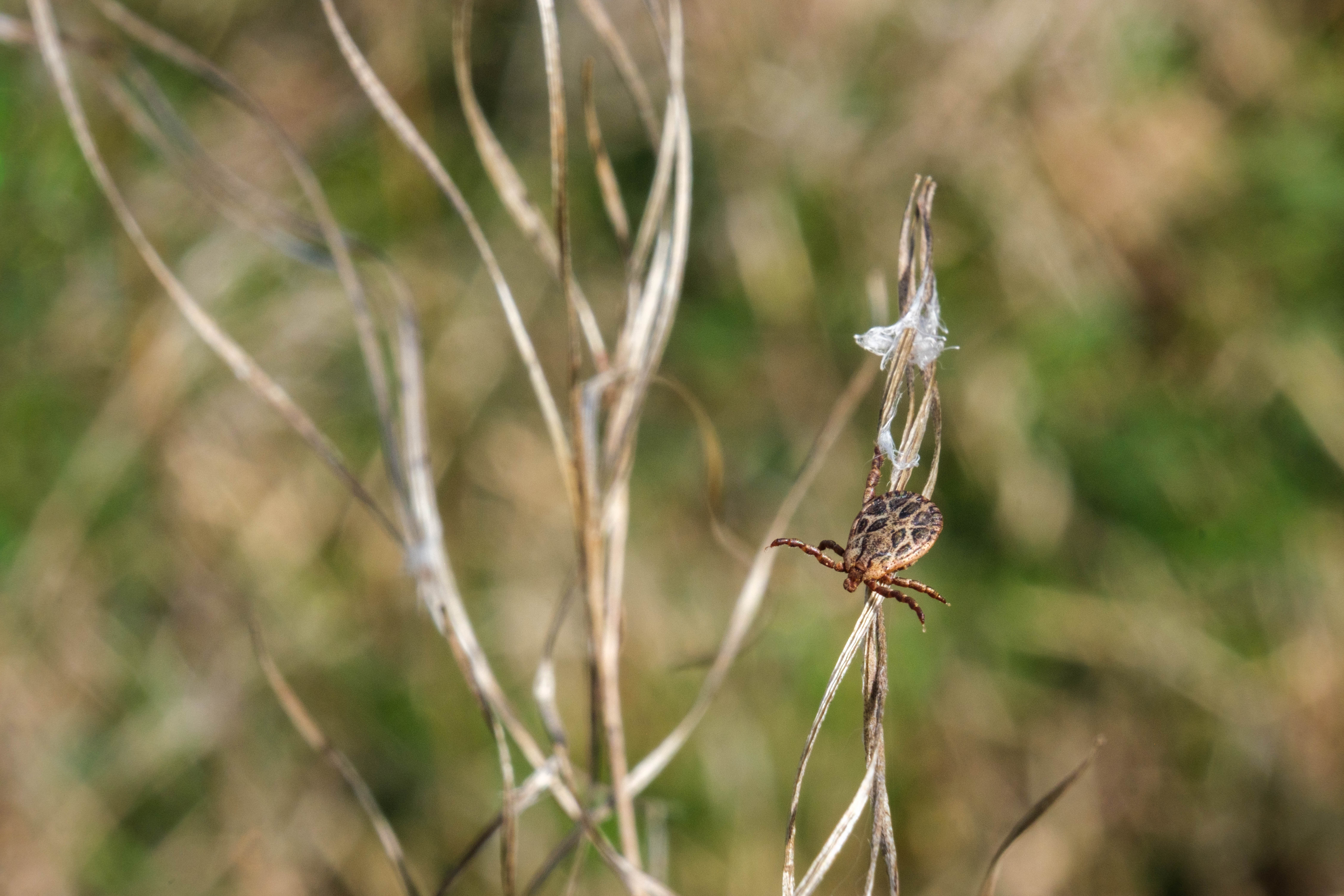
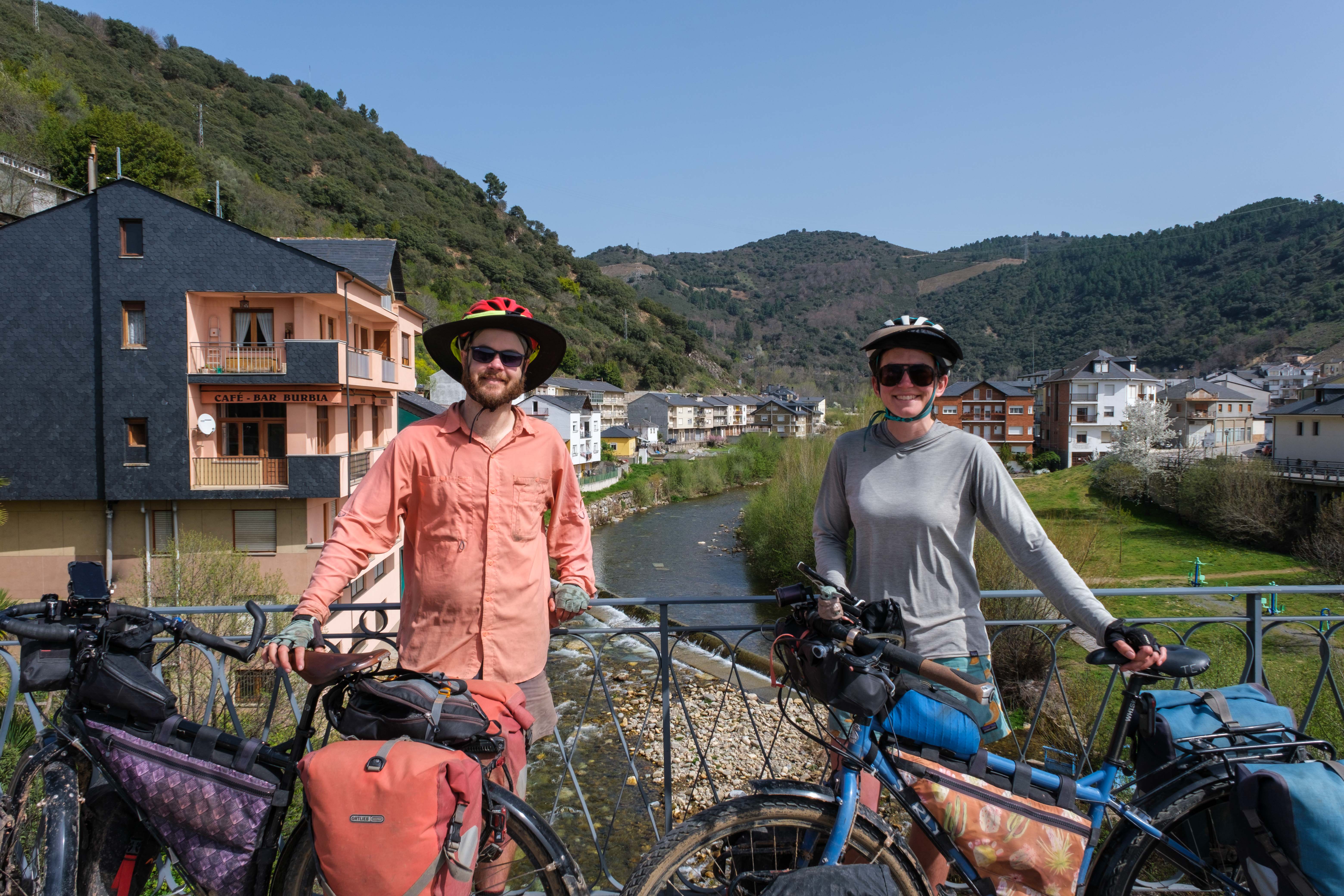
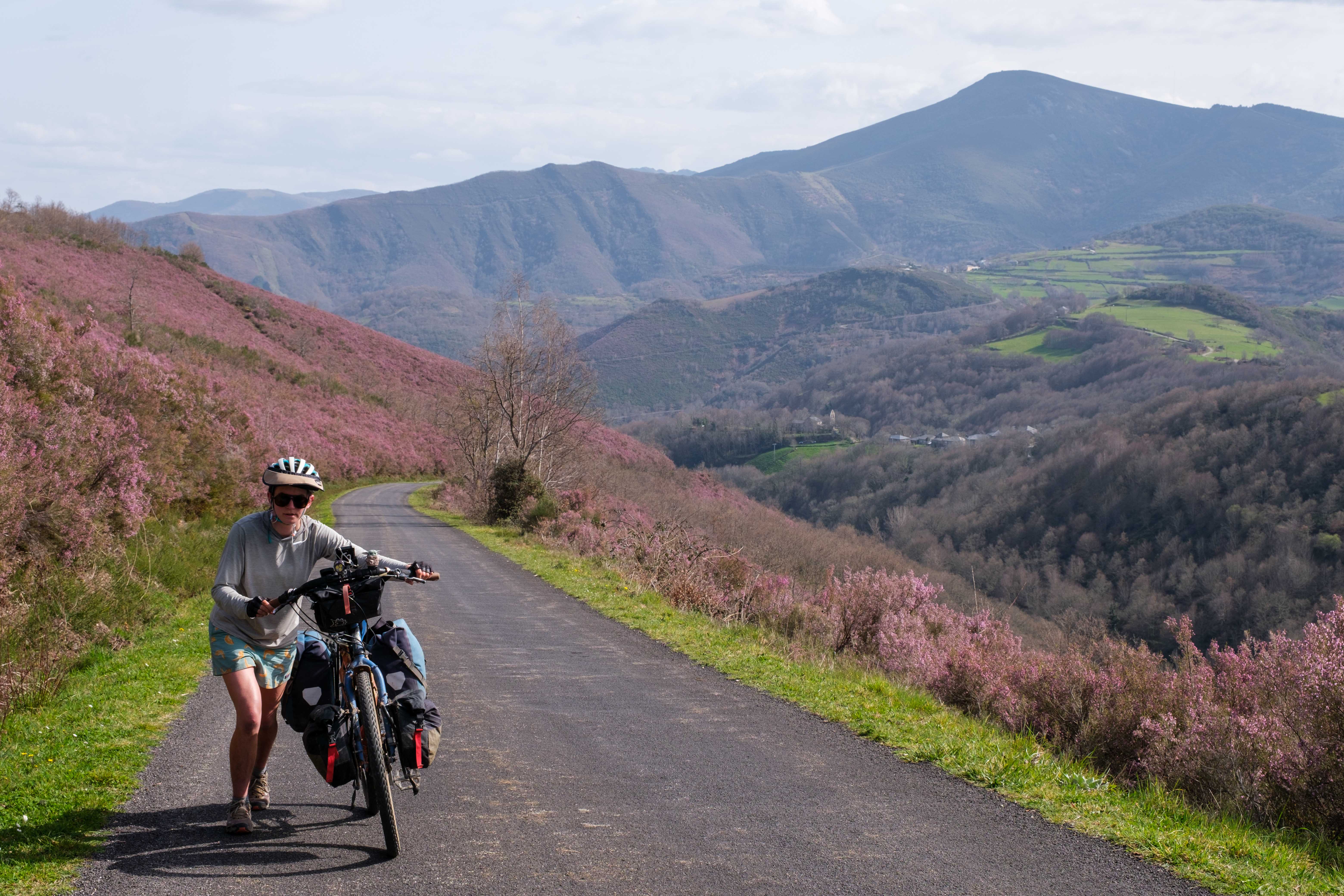
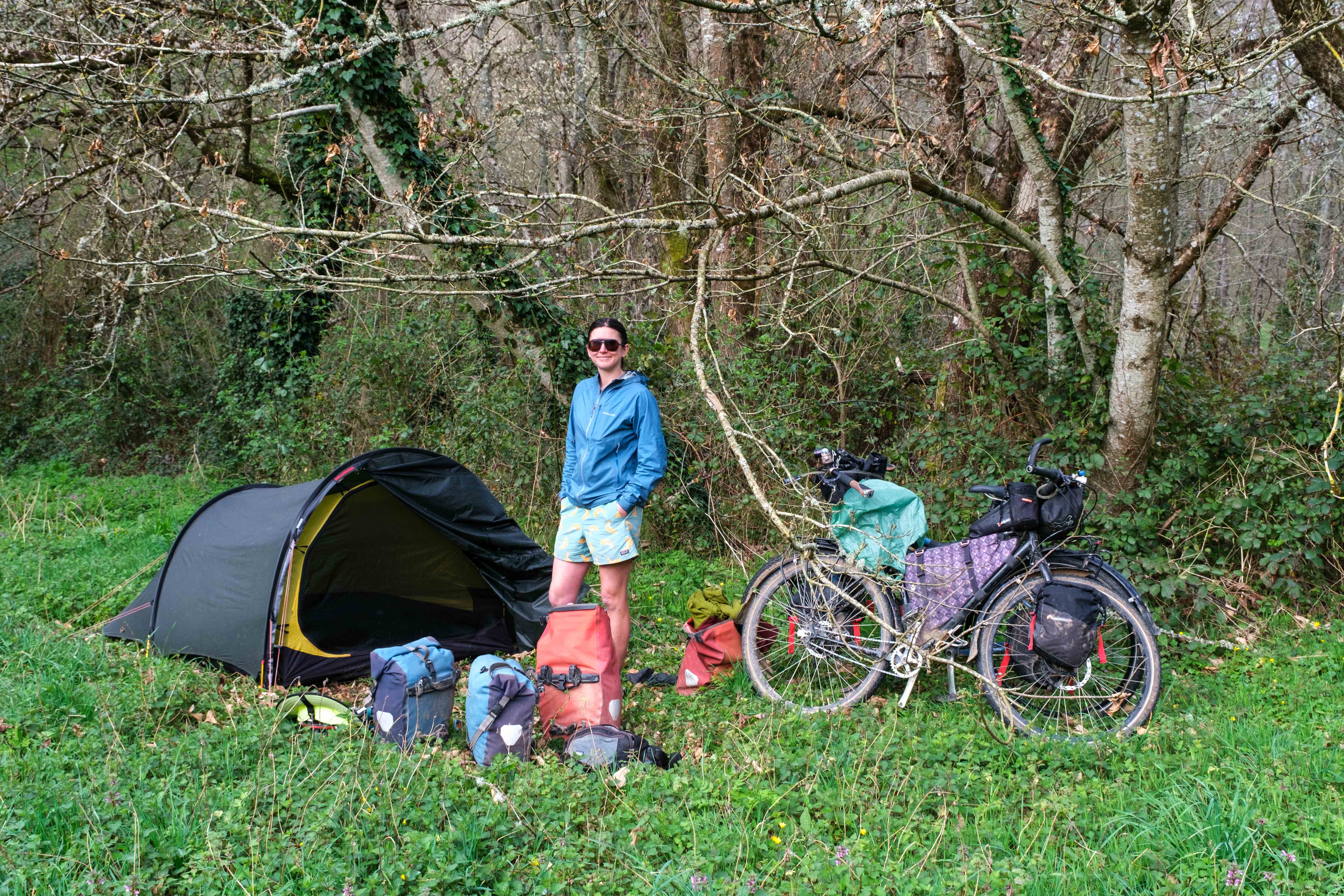
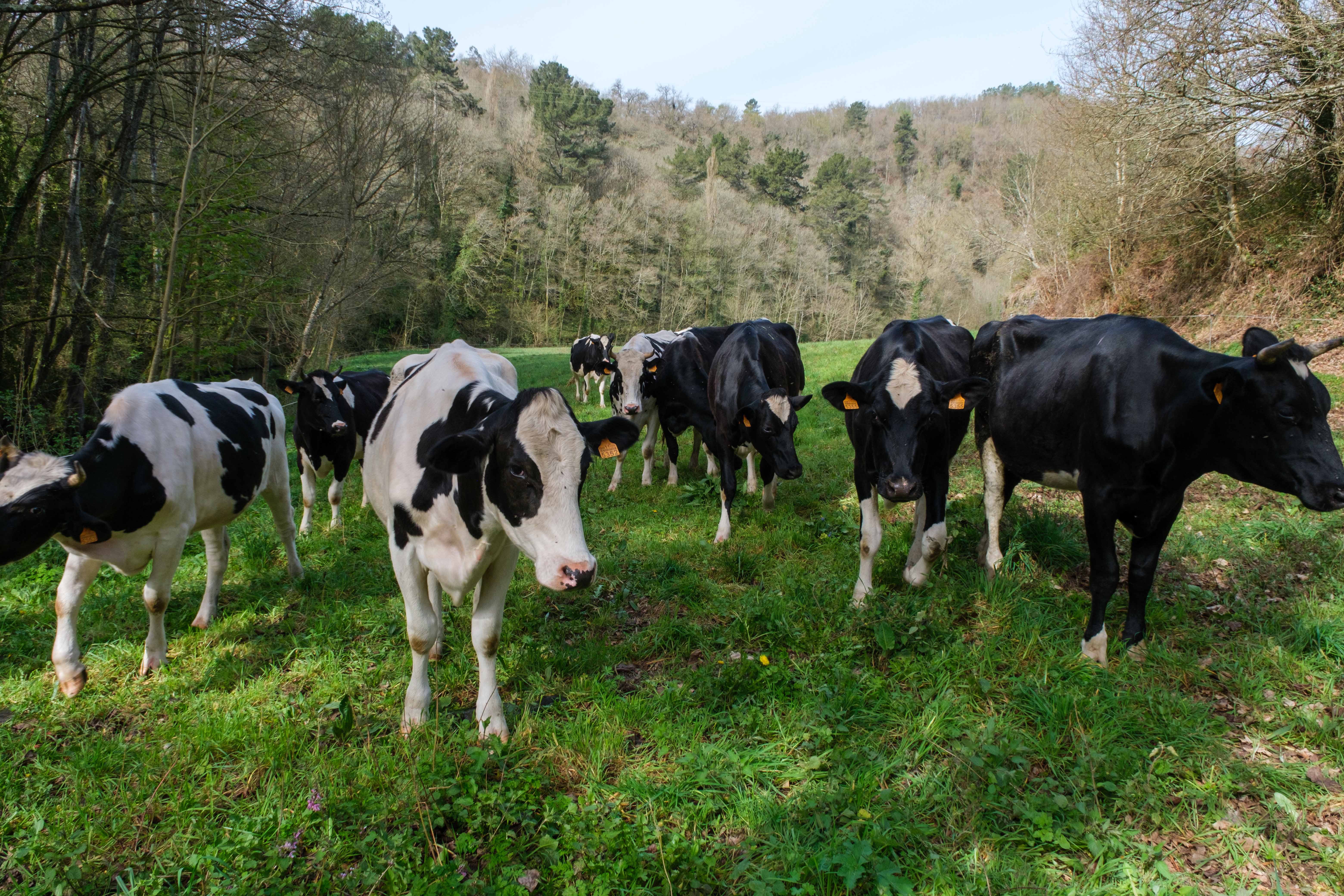
Some Disadvantages of Cycling the Camino
Both of us had heard a lot about the Camino as a long distance backpacking route, which was a big reason why we decided to cycle it. While it was really cool seeing all the towns, you do miss out on the social aspect of the trail as a cyclist. We were going much faster than the hikers, so we didn’t wind up in a “bubble” of people that travel the trail together.
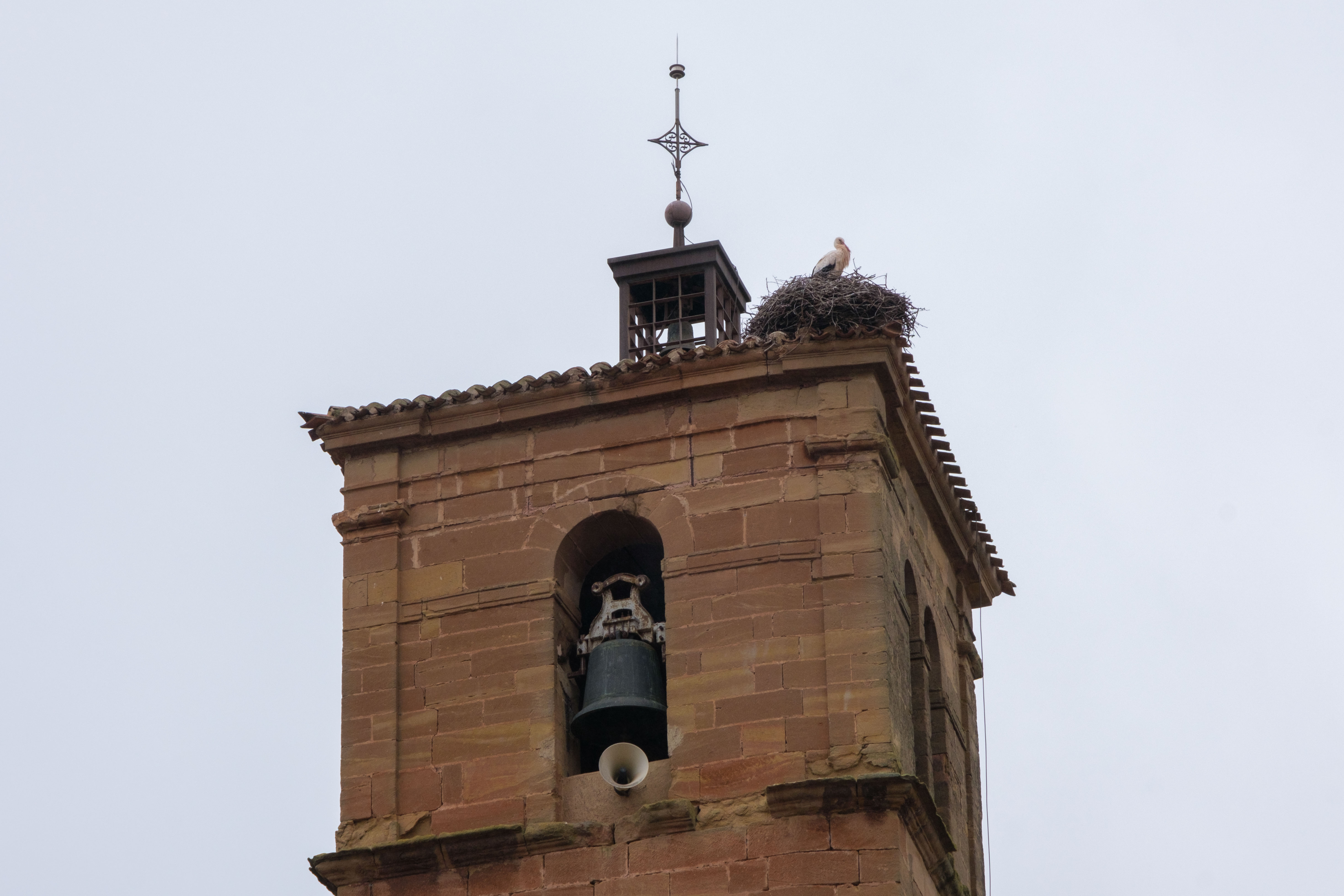
We also didn’t stay in any of the albergues since we were budget touring, and that social component is a big reason why many do the Camino. Overall it seems like a much better experience as a walk than a cycle, especially if you want to connect with other people along the way. It was nice to be able to quickly ride the somewhat boring Burgos to Leon section though!
Santiago de Compostela
We rode into the Praza do Obradoiro amid the sound of a bagpipe street performer and gazed up at the famous cathedral. Even though we weren’t doing the Camino for religious reasons, it was still a really neat way to culminate this section of our trip.
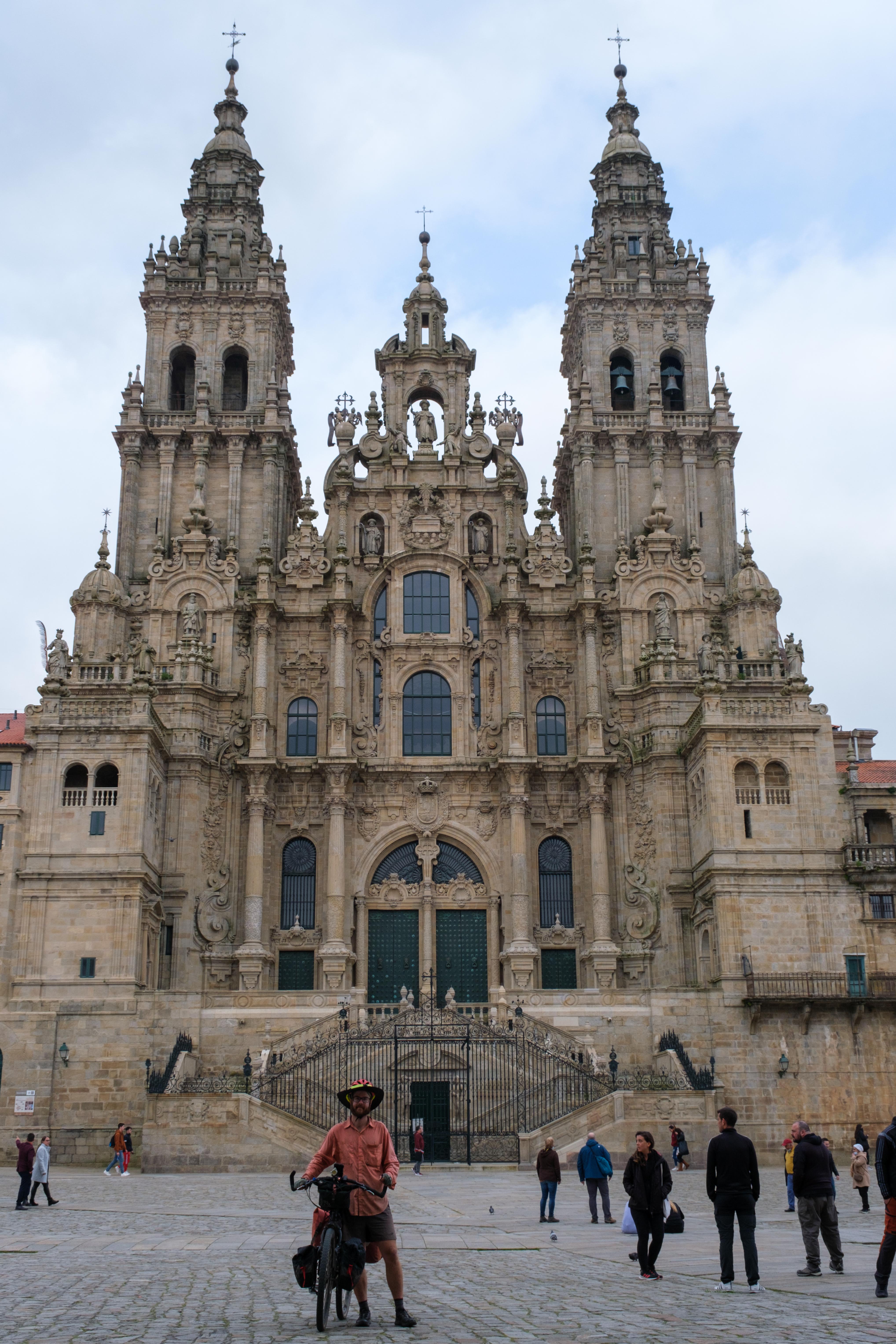
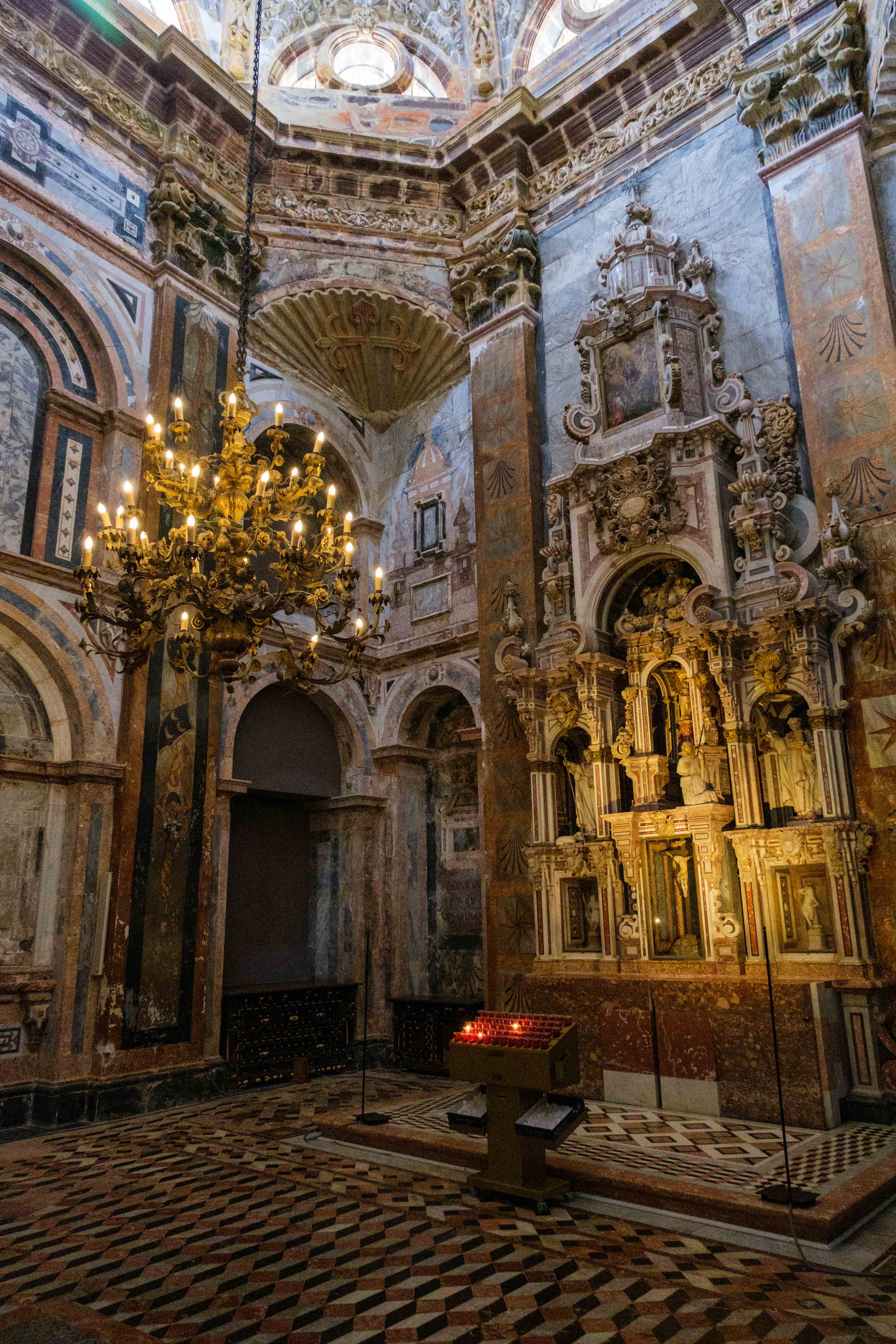
In Santiago we took on the perennial least favorite aspect of bicycle touring – finding boxes and packing up our bikes for airline travel. The first shop we went to didn’t have any boxes, which is typical of small shops in the city since they don’t have much space.
We walked a little over a mile to a shop on the outskirts of town that thankfully had two E-bike boxes, which are a good size for our bikes. The shop owner also gave us a ton of foam and cardboard, which was awesome because often the shops don’t keep that stuff around.
We lugged our boxes back to our hotel, where we packed the bikes in the first floor stairwell since our hotel wouldn’t let us do it in our room.
Airport Transfer and Arrival in Dublin
It was a bit difficult finding information on the airport bus in Santiago, but the hotel receptionist marked its pickup point on a map for us. We thought it would be a specific bus that only went to the airport and had a big cargo hold for luggage. That was most definitely not the case – it was just a regular city bus and we had a mild panic thinking we’d have to cram our boxes onto a crowded bus.
The bus driver seemed to not care at all and gave us a wave that said “if you can fit on the bus, it makes no difference to me.” We shoved our boxes and bags into the open handicap area, and luckily the bus didn’t get too crowded. It only cost us 2 euro – much cheaper than a private taxi!
Dropping our bikes off at checked luggage is always a relief, though it’s also scary entrusting something so important to the airline. When we got our boxes in Dublin, they were surprisingly undamaged, though Andrew’s Sinewave Beacon dynamo light/USB charger somehow got smashed and was broken beyond repair. While it was an expensive piece of equipment, at least it could be replaced and didn’t affect the functioning of the bicycle.
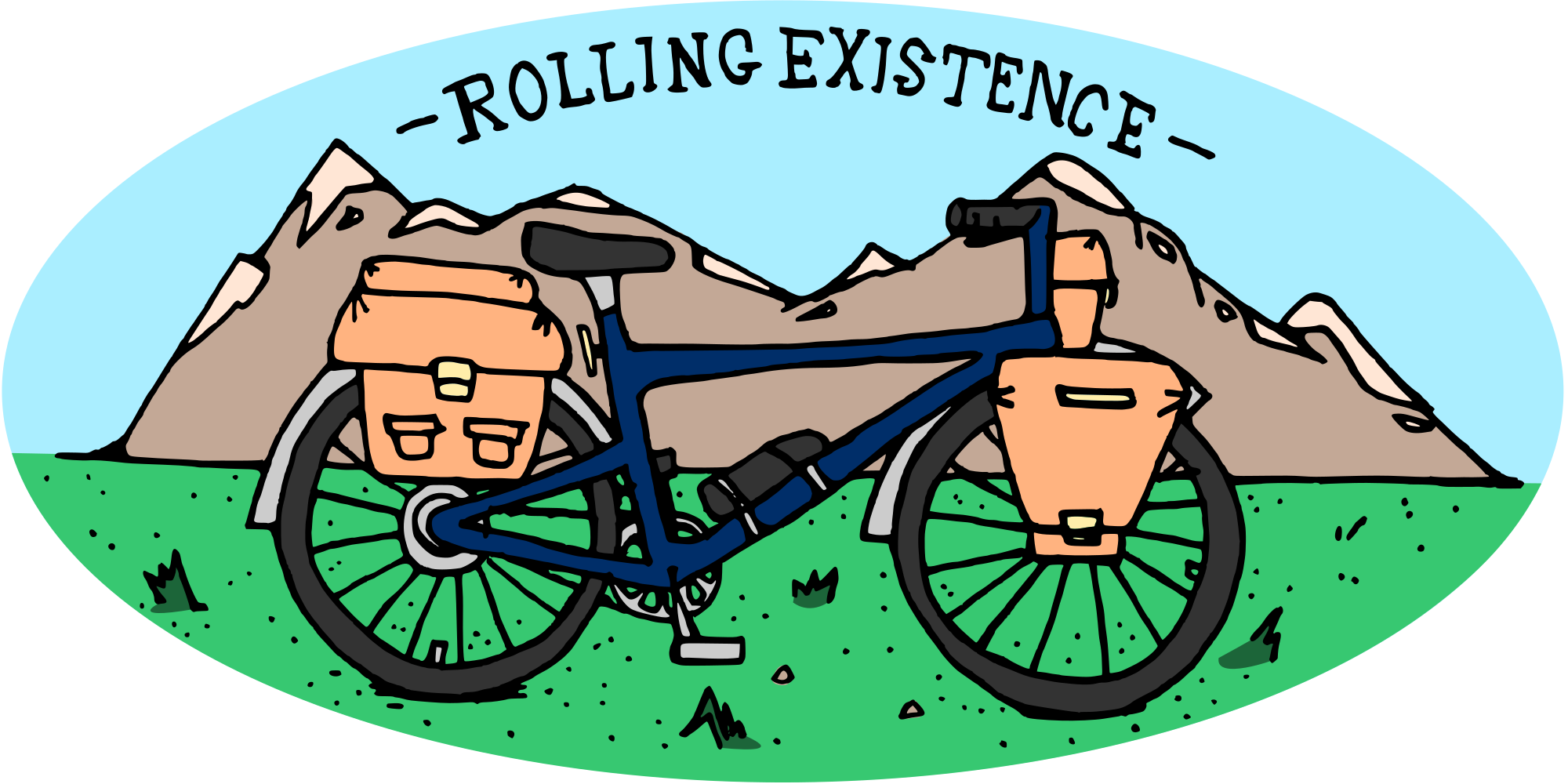

Awesome trip guys.